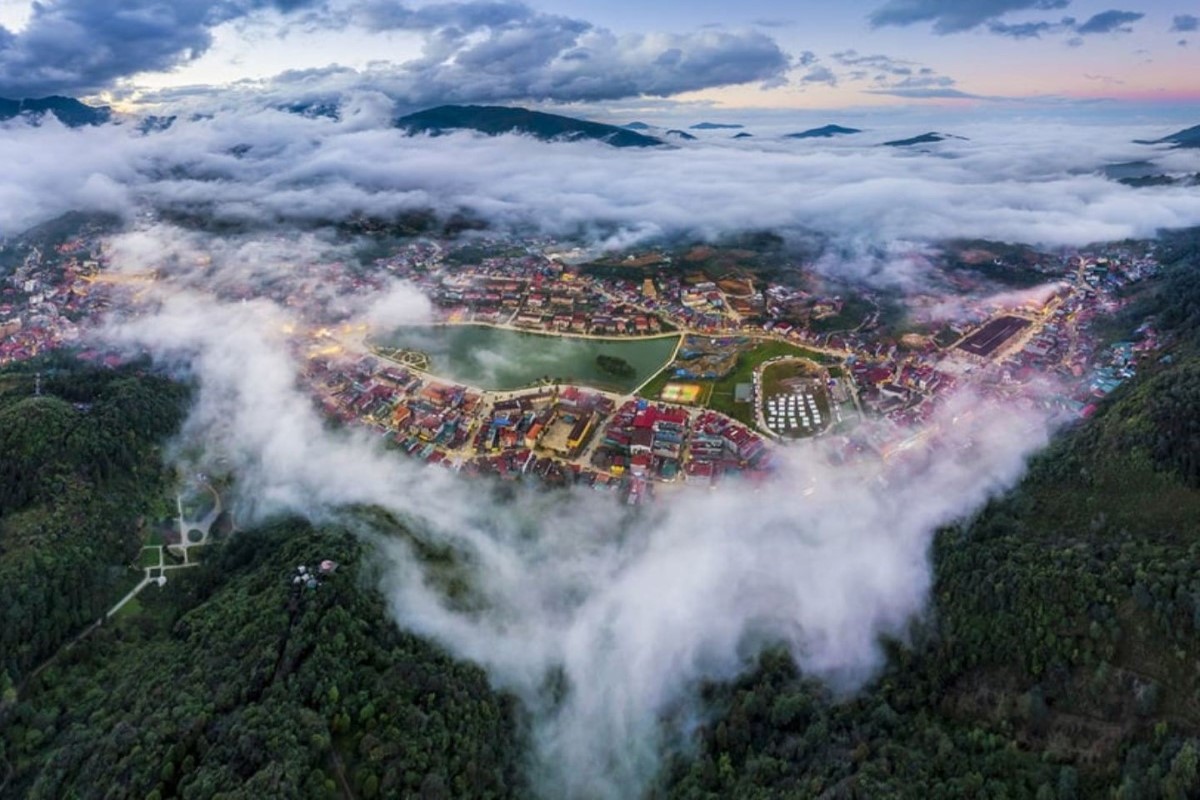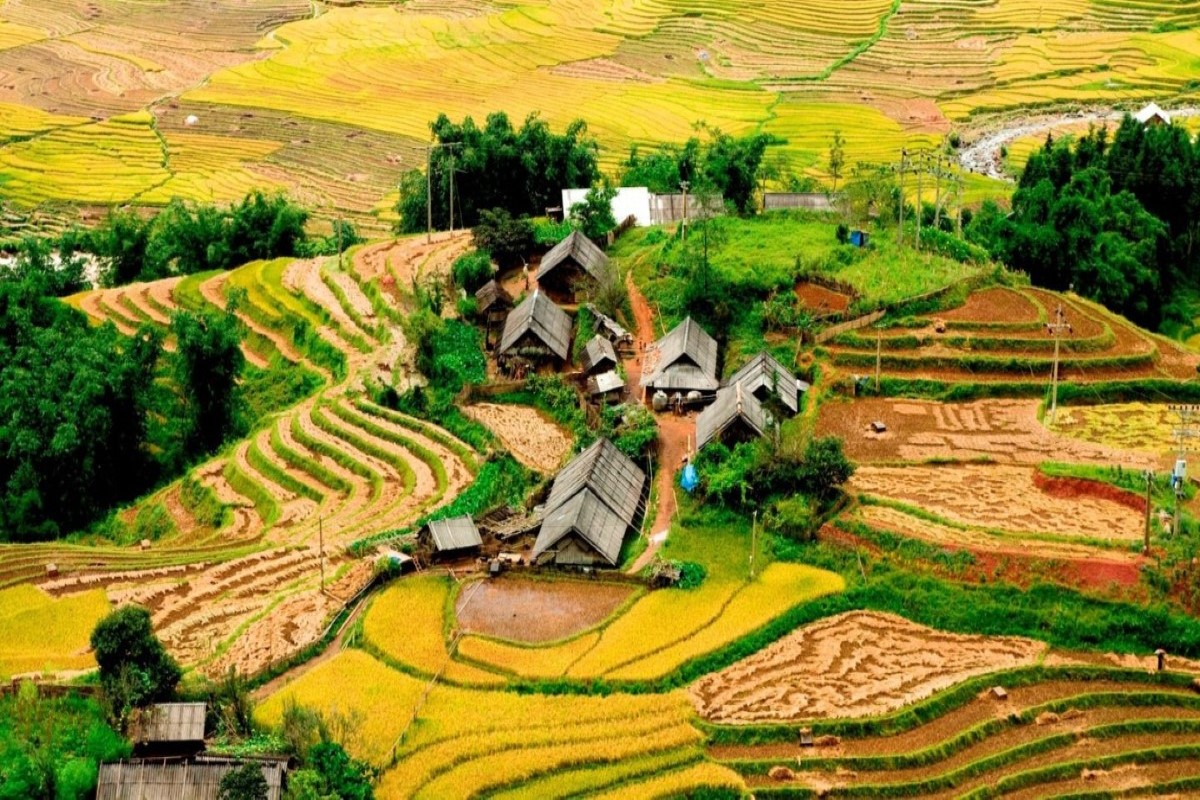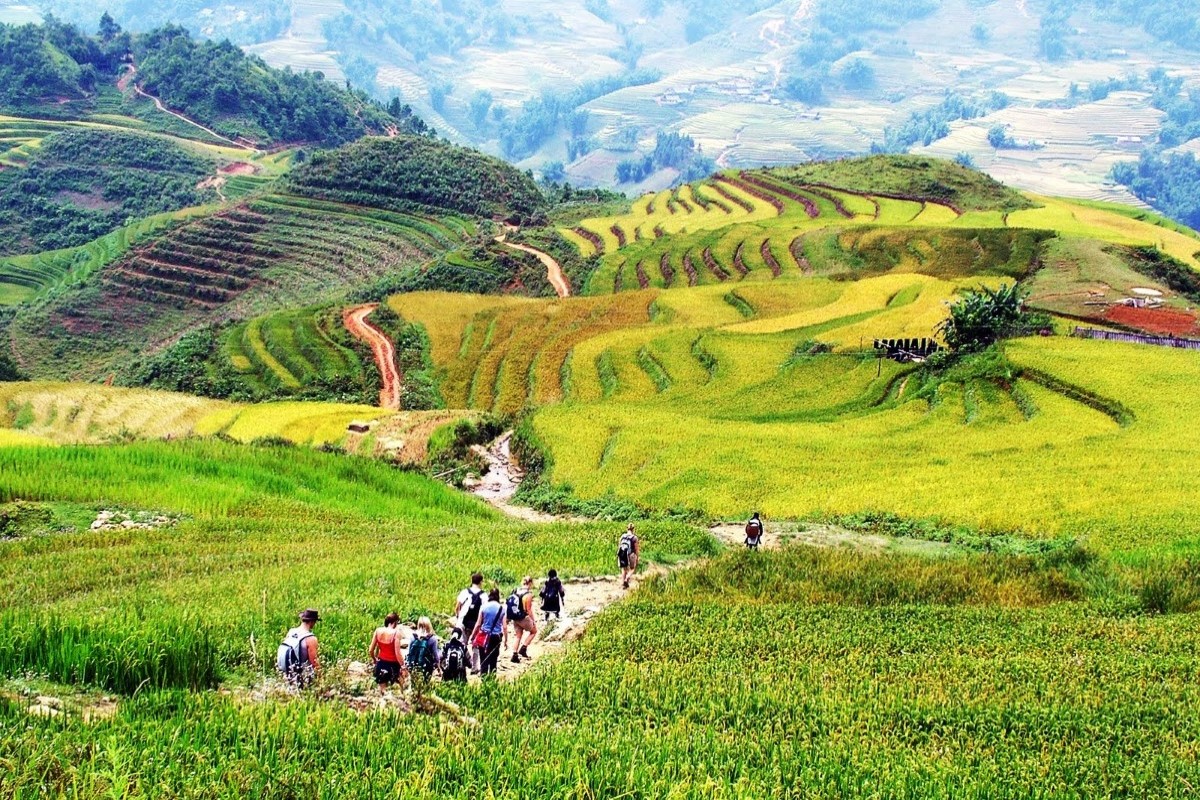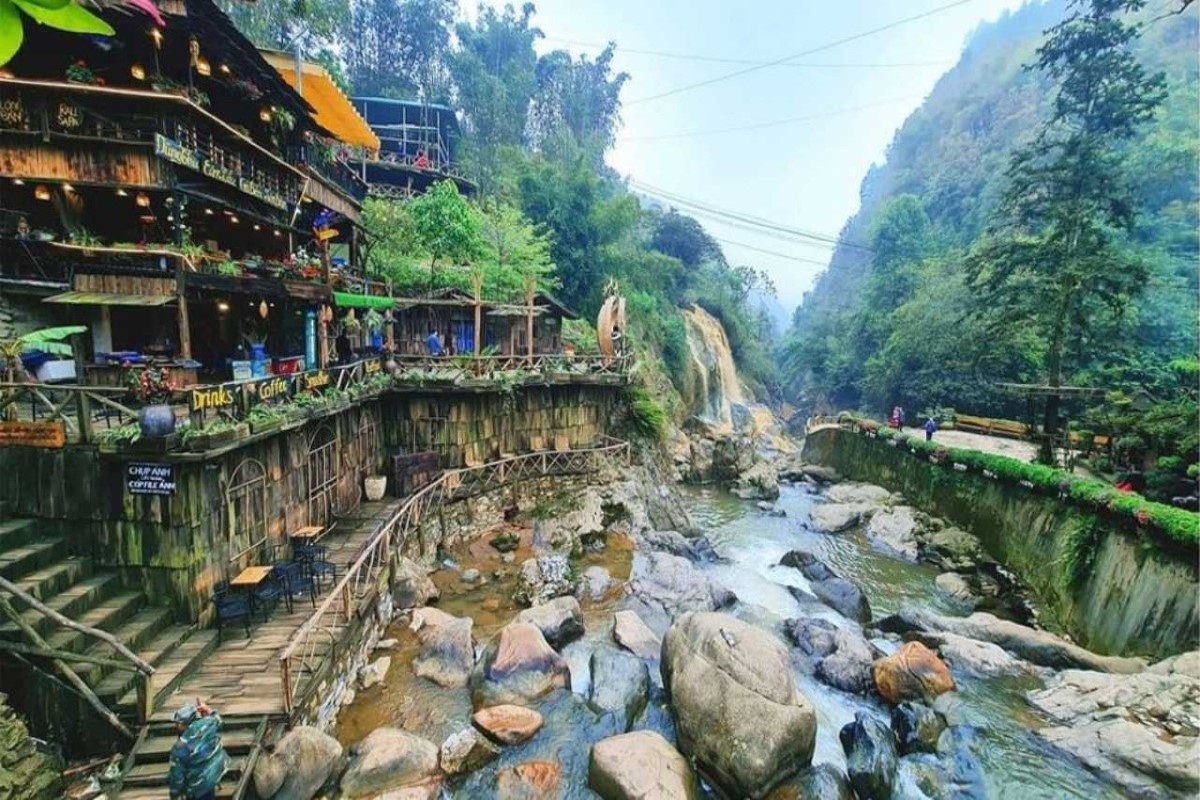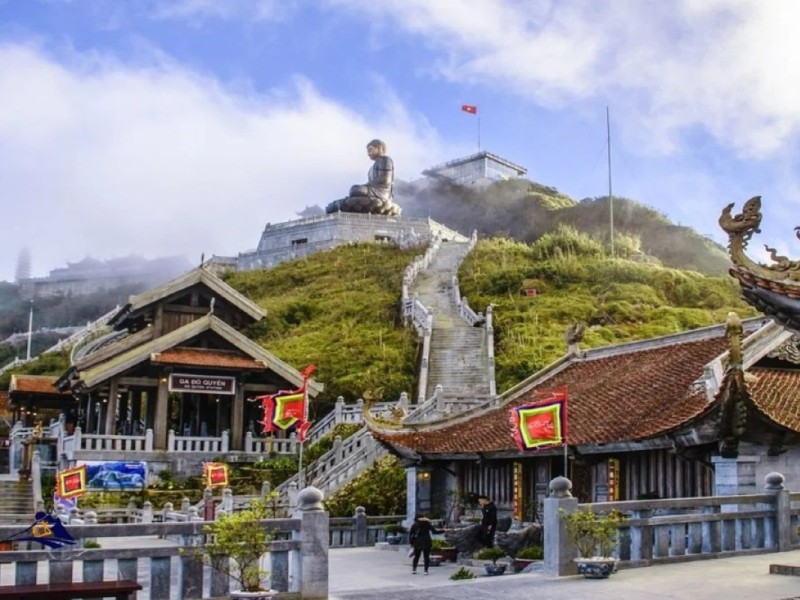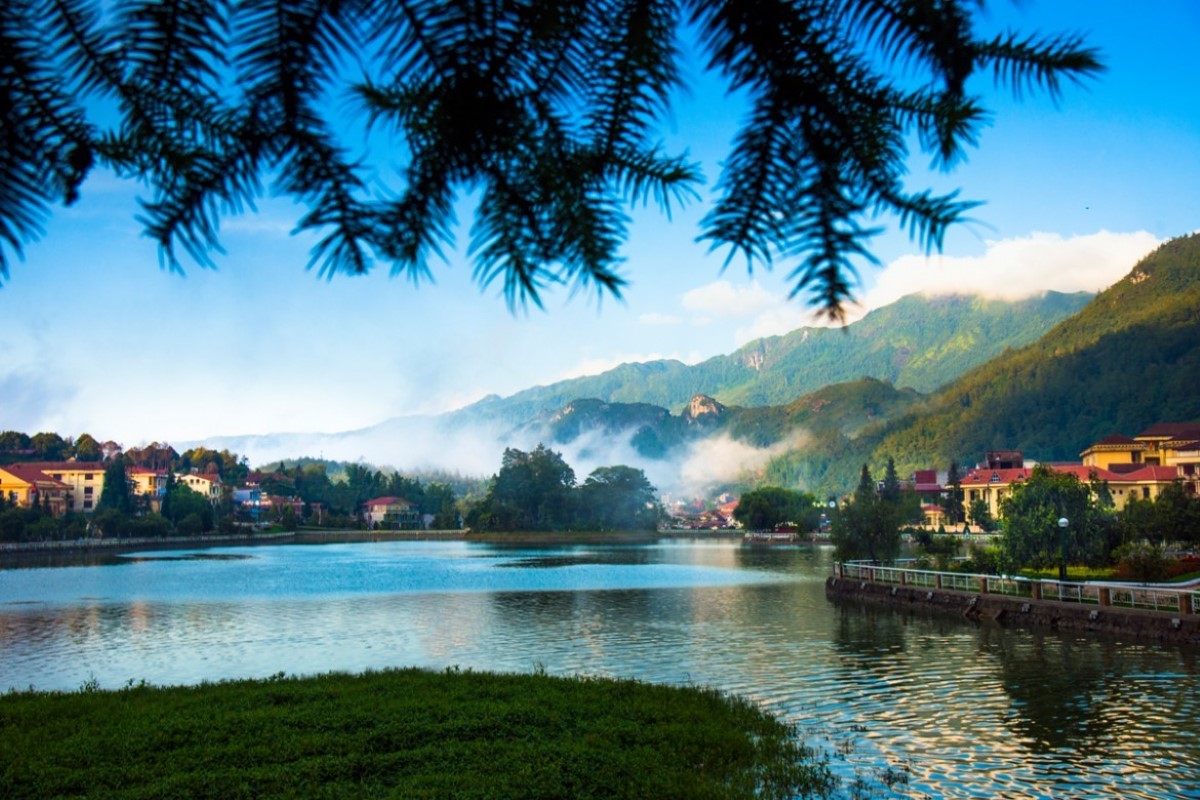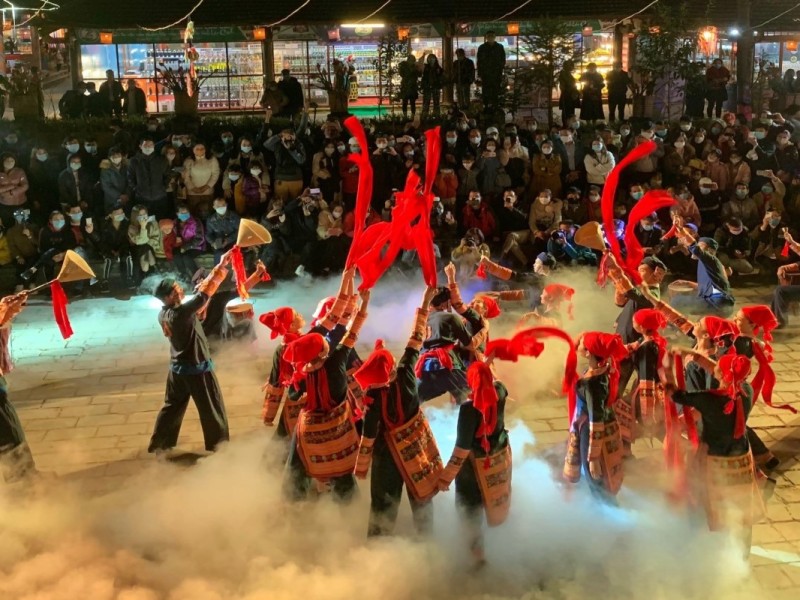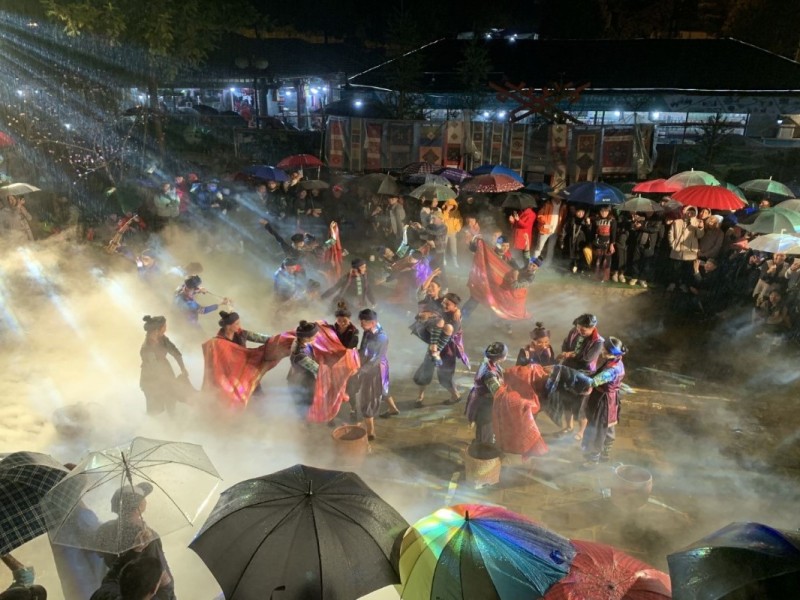Sapa Night Market: Complete Guide to Top Activities, Food & Travel Tips
Sapa Night Market is a vibrant evening marketplace in Sapa, Vietnam, where visitors can enjoy authentic street food, shop for handmade crafts, and experience the unique cultures of local ethnic minorities. The market offers live performances, colorful textiles, and a lively atmosphere, making it a must-visit for travelers seeking cultural immersion.
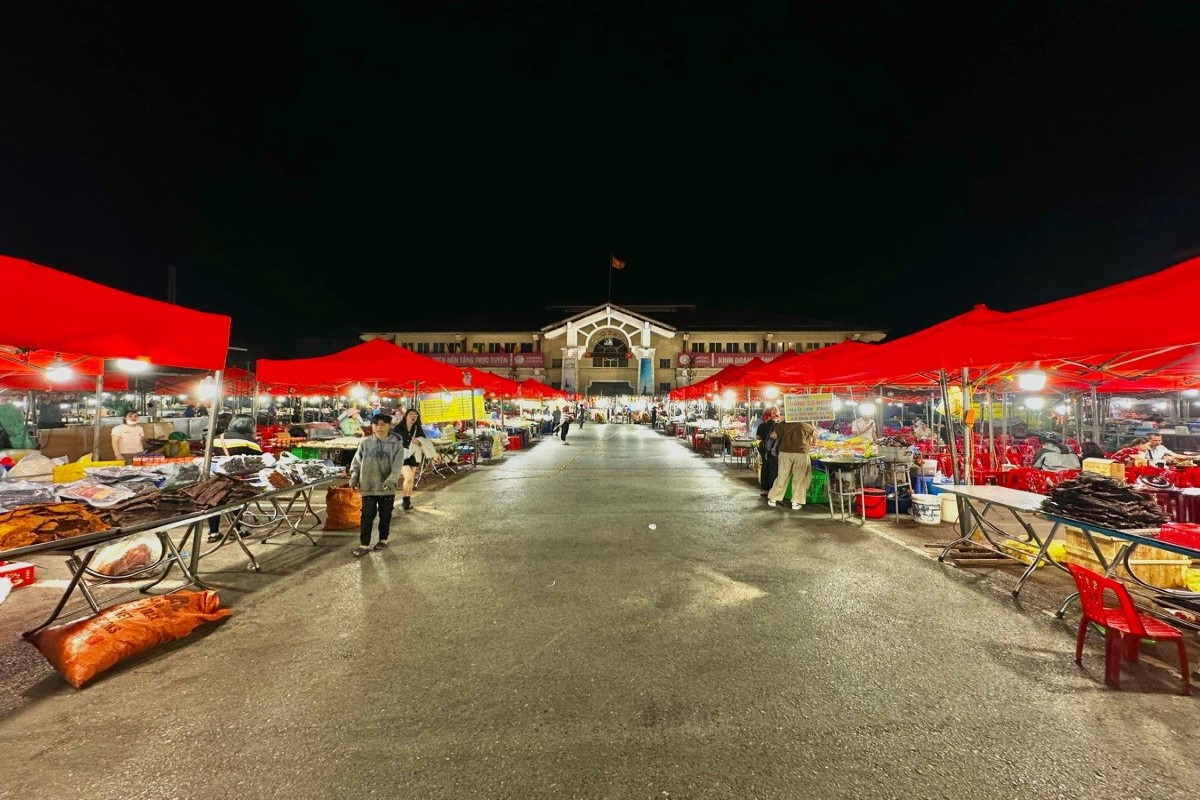
Get to Know Sapa Night Market
Tucked in the heart of Sapa, in the misty mountains of northern Vietnam, Sapa Night Market is a gathering place where tradition, culture, and everyday life blend into an unforgettable night experience. Each evening, the market springs to life with vivid colors, rhythmic sounds, and the tempting aromas of local street food. Here, you don’t just shop or taste—you step directly into the unique atmosphere of one of Lao Cai’s most vibrant cultural hubs.
The story of Sapa Night Market is rooted in community and tradition. Once a simple trading space for ethnic minorities like the Hmong, Dao, Tay, and Giay, the market has grown into a must-visit for travelers and a proud showcase of cultural heritage. Market stalls overflow with intricate embroidery, hand-forged silver, and specialties from across the region. Musicians gather, children laugh, and the sense of place feels unmistakably real.
This is not just a night market—it’s an evolving tradition shaped by local hands and hearts. Each visit offers the chance to discover the diversity of northern Vietnam, from the lively spirit of the old “Love Market” gatherings to the modern blend of locals and visitors exploring the same lantern-lit lanes. Whether you’re drawn by the famous textiles, the flavor of grilled skewers, or the echoes of folk music, every moment here promises new insight.
Sapa Night Market welcomes everyone—families, solo adventurers, first-time travelers, and seasoned explorers. There’s no entry fee, and the market is open from early evening until late at night, with hours sometimes shifting slightly based on the season or community events. Accessibility is improving, but expect uneven cobblestone ground and busy crowds, especially on weekends.
As you plan your journey, let the market’s energy, authenticity, and warm sense of welcome be your invitation. Discover why this market remains the beating heart of Sapa after dark. Ready to explore? Read on for insider details, directions, and expert tips to make the most of your night market adventure in Sapa.
Are you curious about how to get to Sapa Night Market or what makes it so unique? Continue reading to unlock the secrets, find the perfect route, and prepare for an experience you’ll never forget.
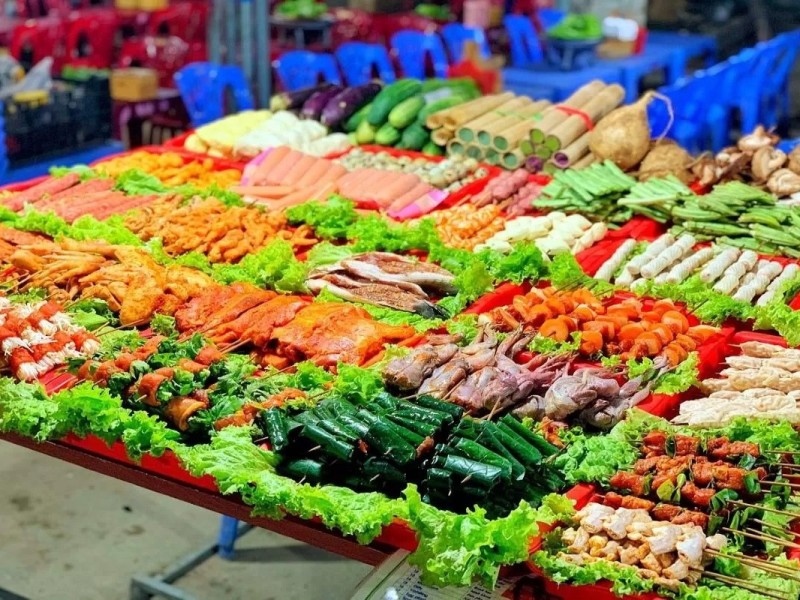
Where Is Sapa Night Market?
For travelers searching for the exact sapa night market address, you’ll find the market along Cau May Street, right at the lively core of Sapa town, Lao Cai province, Vietnam. It’s nestled between two iconic landmarks: the historic Sapa Stone Church and bustling Sapa Central Square—both of which make excellent orientation points when you’re navigating the town’s winding streets.
Official address, location details, and how to find it easily
Sapa Night Market is located at Cau May Street, Sapa, Lao Cai, Vietnam.
- Address: Cau May Street, Sapa town, Lao Cai province, Vietnam
- Landmark Navigation: Just steps from Sapa Stone Church and Sapa Central Square
- Public Transport: If you’re arriving by train or bus to Lao Cai station, it’s a scenic transfer—about 30–40 minutes by minibus, taxi, or shuttle to Sapa town center
- From Your Hotel: Most central hotels are within a 5–10 minute walk; simply head toward the church, and the market lights will guide you
- Taxi Drop-Offs: Ask for Sapa Stone Church or Sapa Central Square; drivers know these points well
- Walking Directions: From the main square, follow the crowds or the music—both will lead you straight to the entrance
Finding Sapa Night Market is easy, even for first-time visitors. Its central location and proximity to local landmarks mean you’re never far from the action, and the market’s lively atmosphere is hard to miss.
Bring your sense of adventure and get ready to explore, sample, and shop your way through the heart of Sapa. If you need personalized guidance or travel arrangements, the team at Asia Travel Links is here to help you plan every detail of your Sapa Night Market experience.
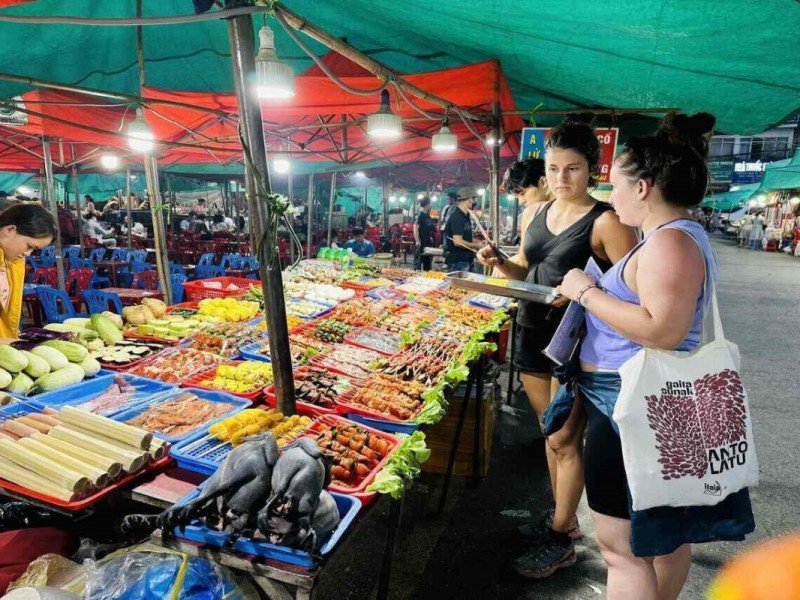
A Colorful History and Cultural Background
The colorful history sapa night market reflects a journey shaped by tradition, resilience, and the evolving spirit of the northern highlands. Sapa Night Market is more than a place to shop—its roots reach deep into the social and cultural fabric of Sapa and Lao Cai province. Originally, this marketplace emerged as a vital trading post for ethnic minorities who traveled for miles across misty valleys and terraced hillsides. The Hmong, Dao, Tay, and Giay people gathered here, bringing their handcrafted goods, fresh produce, and the energy of their unique traditions.
How Sapa Night Market became a cultural icon in northern Vietnam
The rise of Sapa Night Market as a cultural icon began with its role as a communal meeting ground for generations of local families. Long before tourism arrived, it served as a lifeline—where the Hmong, Dao, Tay, and Giay would barter, share stories, and sustain their way of life.
- Trading Origins: For centuries, ethnic minorities used the market as a crossroads for commerce and cultural exchange, selling everything from woven cloth to medicinal herbs.
- Evolution to Tourism: As Sapa became known beyond Vietnam for its breathtaking scenery, the night market transformed. It welcomed curious travelers, yet preserved the rituals and rhythms that made it unique.
- A Melting Pot of Ethnic Groups: The market remains a vivid showcase of local diversity, with each group—Hmong in bold indigo attire, Dao with their scarlet headscarves, Tay and Giay sharing their own styles and crafts—bringing life to the stalls.
- The "Love Market" Legacy: One of the most beloved traditions linked to Sapa Night Market is the famous "Love Market." Historically, this was a gathering for young people from different villages to meet, sing, and sometimes find a partner. Though the modern night market has changed, echoes of these social rituals live on in every festive weekend, blending old romance with today’s lively buzz.
Today, Sapa Night Market stands as a living, breathing symbol of heritage, memory, and community. Its lantern-lit lanes invite you to step into a story still being written—a story where the best souvenirs are found in human connection and shared culture.
Every visit supports the preservation of tradition and offers a unique window into the world of northern Vietnam’s highland peoples. When you wander through the market, you aren’t just seeing the past; you’re becoming part of an ongoing legacy.
Let your next journey to Sapa Night Market connect you to the vibrant roots and real stories that make this destination unforgettable. If you want to understand more about local traditions or need help planning a culturally rich visit, reach out to us at Asia Travel Links for personalized guidance.
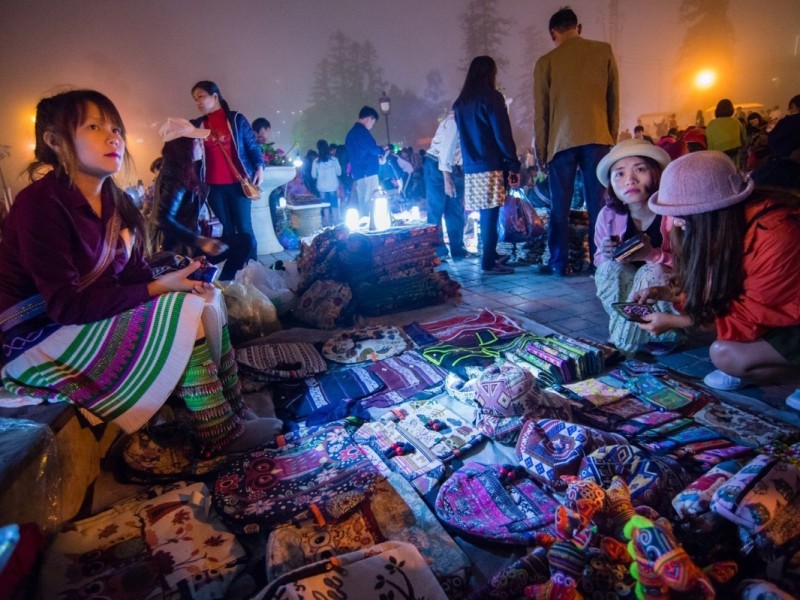
What Makes Sapa Night Market Unique?
Every evening, the unique sapa night market unfolds like a living painting in the highlands of Sapa. From the moment you arrive, your senses awaken to a vibrant world where tradition and modernity mingle beneath the lantern lights. The air is thick with the aroma of sizzling meats and freshly steamed buns, drawing you closer with each step. Brightly colored textiles, stitched by the hands of Hmong, Dao, Tay, and Giay artisans, flutter from every stall, catching the eye and sparking curiosity.
Distinctive features, local ethnic diversity, and market atmosphere
What sets Sapa Night Market apart isn’t just its food or crafts, but the electric market atmosphere sapa is known for—a harmonious blend of community, celebration, and exchange.
- Sensory Tapestry: The scent of grilled skewers and bamboo rice lingers in the night air. Intricate embroidery glows in lantern light, and the rhythmic pulse of traditional music sapa weaves through the crowd. Every conversation is punctuated by laughter, barter, and the joyful chatter of children.
- Community Mosaic: Unlike many other Vietnamese night markets, here you’ll find a living display of ethnic diversity sapa. Each group—Hmong with bold indigo, Dao in scarlet headscarves, Tay and Giay with distinctive patterns—brings unique crafts, foods, and stories.
- Interaction & Discovery: Watch as locals and travelers connect over steaming bowls of thắng cố or as visitors try on hand-dyed sashes. The market’s easy mingling of everyday life and tourism gives every evening a sense of authenticity and surprise.
- Visual Splendor: Expect dazzling displays of silver jewelry, vibrant sashes, and handwoven bags. You can always spot the ethnic groups by their signature outfits—a real-life parade of Sapa’s cultural tapestry.
The magic of Sapa Night Market lies in its energy. It is a crossroads of old and new, where the customs of the highlands meet the curiosity of global travelers, set against the dramatic backdrop of northern Vietnam.
No two visits feel the same. Let yourself be swept up in the flavors, textures, and spirit of the night, and discover a side of Sapa you’ll remember long after you leave.
Are you ready to step into this sensory world and see what makes Sapa Night Market unlike anywhere else? Plan your visit with Asia Travel Links for local insights and personalized recommendations.
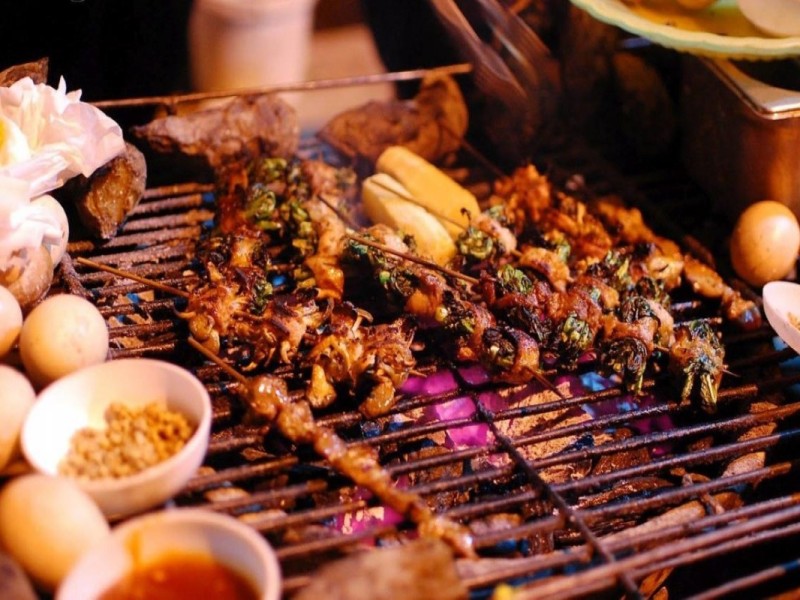
Quick Facts Every Visitor Should Know
Planning your visit to Sapa Night Market is easy with these essentials at your fingertips. Whether you’re mapping out your night or looking for key contacts, these details will help you move smoothly through every stage of your adventure.
Entry fees, opening hours, accessibility, and essential contacts
To make your experience at Sapa Night Market as seamless as possible, here are the must-know facts:
- Entry Fee: There is no entry fee for Sapa Night Market—it’s completely free to enter and explore.
- Opening Hours: The market generally runs from 5:00 PM to around 10:00 or 11:00 PM. Hours may extend later on weekends or during festival periods but can close early in harsh weather.
- Accessibility: While the market is located in the heart of Sapa town, expect uneven cobblestone ground and moderate-to-heavy crowds, especially during holidays and weekends. Strollers and wheelchairs may face some difficulty, but the main market lanes are navigable with care.
- Contacts:
- Local Police (Sapa, Lao Cai): +84 214 3871 234
- Sapa Tourist Information Center: +84 214 3871 360
- Asia Travel Links (travel support): +84917506881
- Best Times to Avoid Crowds: For a quieter visit, try coming on weekdays, just as the market opens around 5:00 PM, or later in the evening after 9:00 PM.
These quick facts ensure you’re prepared for every practical aspect of your evening at Sapa Night Market. If you need up-to-date details or want tailored advice for your visit, contact us at Asia Travel Links. We’re here to help make your time in Sapa easy and memorable.
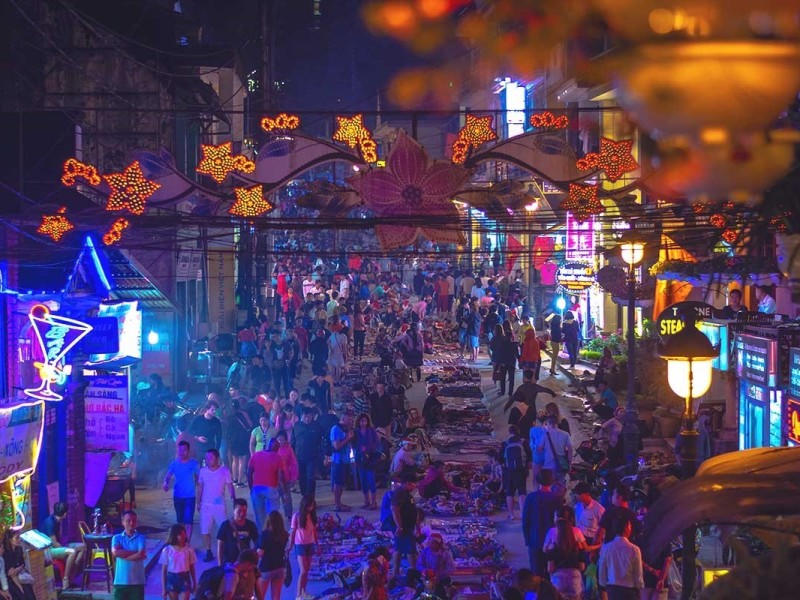
The Best Ways to Get to Sapa Night Market
Navigating your way to Sapa Night Market is part of the adventure, with options to suit every budget and style. Whether you’re coming from the bustle of Hanoi, the gateway of Lao Cai, or a nearby village, understanding the best ways to reach the market ensures you’ll arrive relaxed and ready for an unforgettable night.
With a bit of planning, you can choose the travel method that matches your needs—be it a comfortable train ride, a scenic bus journey, a private car, or your own self-drive road trip. Each route offers its own experience, so you can find the ideal path to immerse yourself in the excitement of Sapa Night Market. If you’re looking for tailored advice or booking support, reach out to Asia Travel Links for expert recommendations and up-to-date schedules.
Every traveler’s journey is unique. Choose your route, compare costs and travel times, and enjoy the anticipation of arriving at the heart of Sapa after dark.
Ready to pick the travel option that fits your adventure? Read on for a breakdown of the main ways to get to Sapa Night Market, along with practical tips for a smooth journey.
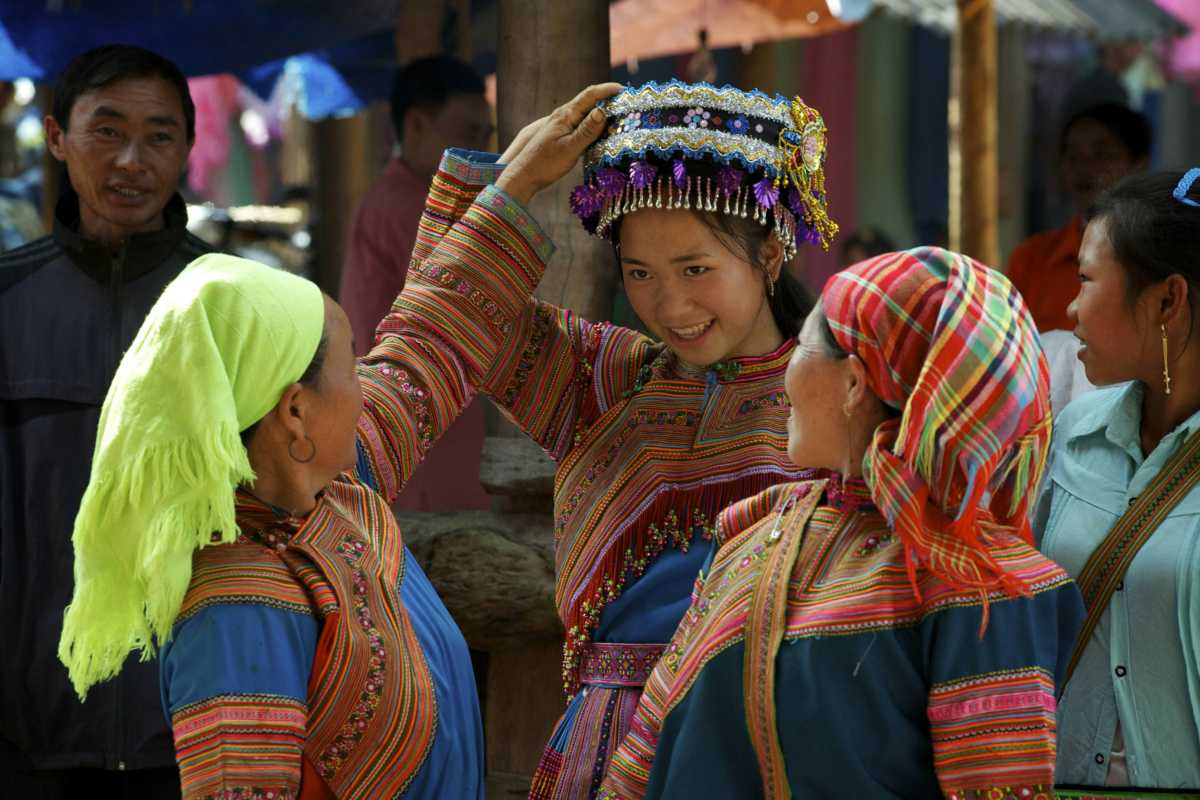
Traveling from Hanoi, Lao Cai, and Nearby Destinations
If you’re wondering how to get to sapa night market, several well-established routes will bring you from major cities to the heart of Sapa. Each option comes with its own advantages, making it easy to tailor your travel to your preferences and schedule.
Options for trains, buses, private transfers, and self-drive
Reaching Sapa Night Market is simple when you know your choices:
- Sleeper Train from Hanoi to Lao Cai: Board an overnight sleeper train from Hanoi to Lao Cai (about 7–8 hours, departing most evenings). Reserve tickets early—especially during peak travel periods—for a comfortable berth. Upon arrival in Lao Cai, take a connecting shuttle bus or taxi for the final 35 km up winding mountain roads to Sapa town (about 1 hour; tickets available at the station, 50,000–70,000 VND per person).
- Express Bus from Hanoi: The direct Sapa Express bus offers air-conditioned comfort and efficient travel (approximately 5.5–6 hours). Buses depart from central Hanoi (My Dinh or Old Quarter) with multiple daily departures. Tickets typically range from 250,000–400,000 VND per seat, and can be booked online or at local agencies.
- Private Transfers: Hiring a private car or minivan from Hanoi or Lao Cai is the fastest and most flexible way, with pickup at your hotel and door-to-door service. Expect to pay 2,800,000–3,500,000 VND (one way) for a sedan or SUV. This is ideal for families or those seeking convenience.
- Self-Drive: For adventurous travelers, renting a car or motorbike gives you maximum flexibility. The highway from Hanoi to Sapa is scenic but requires alert driving due to curves and changing weather. Check rental terms for insurance and be prepared for mountain roads.
- Average Travel Times and Price Ranges:
- Sleeper Train + Shuttle: 8–9 hours total, 350,000–600,000 VND
- Express Bus: 5.5–6 hours, 250,000–400,000 VND
- Private Transfer: 5–6 hours, 2,800,000–3,500,000 VND
- Self-Drive: 5–7 hours, rental prices vary (contact local agencies for latest rates)
No matter which route you choose, each offers a glimpse of northern Vietnam’s stunning landscapes and the excitement of journeying toward the lantern-lit lanes of Sapa Night Market.
For the latest timetables, reputable transport providers, or help booking your journey, feel free to contact Asia Travel Links or email us for prompt, reliable support.
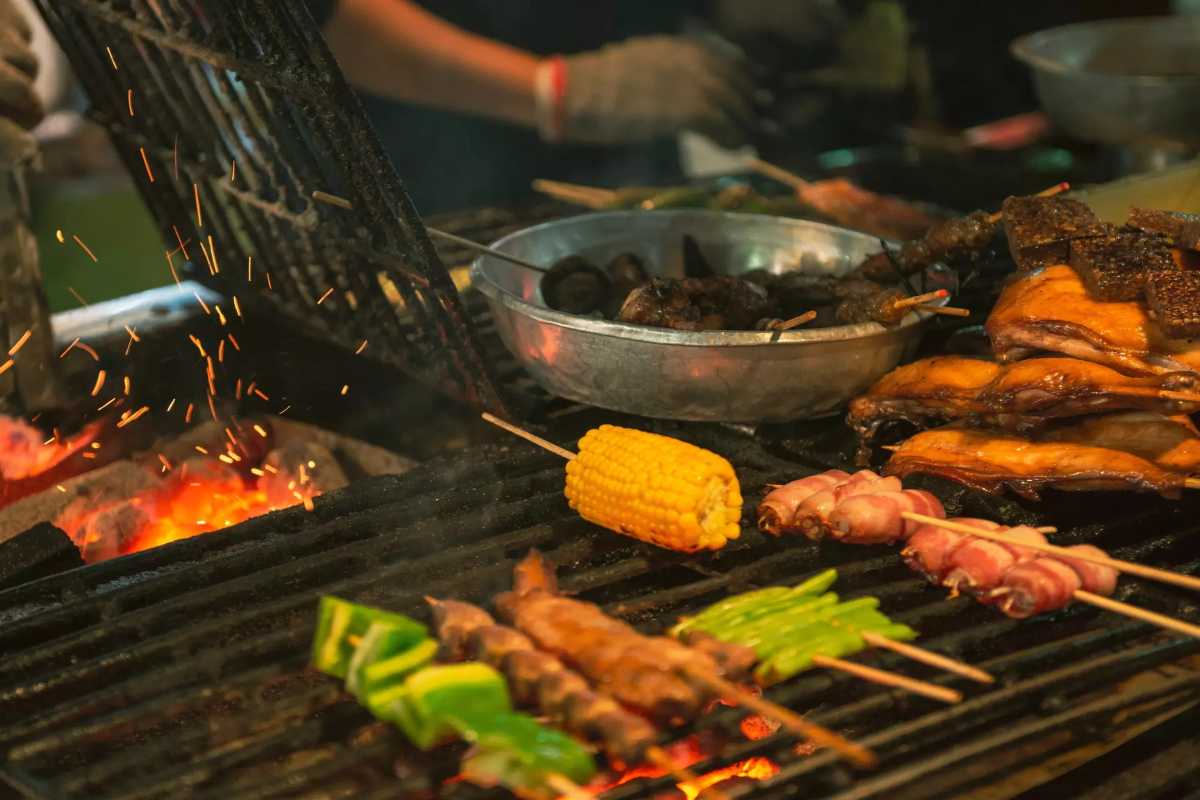
Walking and Getting Around Sapa Town
The last steps of your journey—walking to sapa night market or catching a quick ride—are part of the local adventure. Sapa is a compact town, and the market is centrally located, making it accessible from most hotels and homestays.
Directions for pedestrians and local transport tips
Moving from your hotel to Sapa Night Market is simple with these directions and local travel tips:
- Walking Directions: If you’re staying at a central hotel (along Cau May, Fansipan, or Xuan Vien streets), the market is just a 5–10 minute stroll away. Exit your hotel and walk toward Sapa Stone Church or Sapa Central Square—these are your main markers. The market’s bright lights and lively sounds will lead you right to the heart of the action.
- Town Layout: Sapa is arranged around its central square, with the night market just east of the main church. Most hotels are clustered within a 1 km radius, so navigation is straightforward and the routes are safe and well-lit.
- Local Transport: If you prefer a ride, Sapa xe om (motorbike taxis) and regular taxis are everywhere. To avoid confusion, confirm your destination and agree on the price before hopping on—expect 20,000–30,000 VND for a short trip in town. Taxis can be flagged near hotels or central intersections, and most drivers are familiar with the night market.
- Common Walking Routes: Popular clusters like the Victoria Sapa Resort, Sapa Horizon Hotel, and Bamboo Sapa Hotel are all within walking distance. Simply head downhill toward the central square, then follow the main flow of people or ask a local for “chợ đêm” (night market).
Pedestrian access is easy, though the ground can be uneven and crowded on weekends. If you have mobility needs or lots of shopping to carry, local taxis are a smart backup.
Getting to Sapa Night Market is part of the town’s friendly, small-town rhythm. If you’d like a personalized walking map or need advice on using local transport, contact Asia Travel Links for quick support and on-the-ground tips.
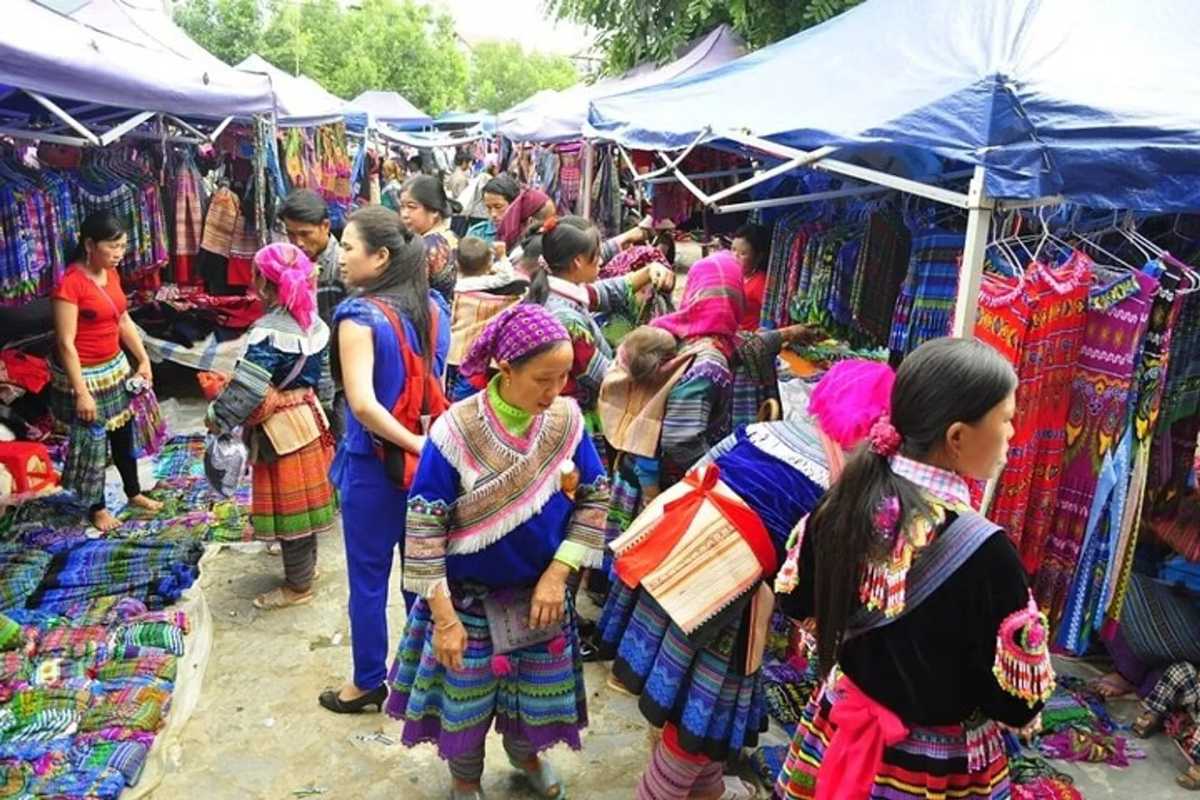
Practical Advice on Parking and Drop-Offs
Arriving by car or motorbike can be convenient for exploring Sapa Night Market, but knowing where to park and how to get close to the market is essential for a hassle-free visit. This section guides you through the best parking locations and drop-off points so you can focus on enjoying the market atmosphere without stress.
Closest parking lots and best drop-off points for easy access
Finding convenient parking and drop-off spots near Sapa Night Market helps especially families, seniors, and travelers with mobility needs. Here’s what you need to know before you arrive:
- Designated Parking Areas: Parking for motorbikes is plentiful along Cau May Street and near Sapa Central Square, while car parking is available at nearby public lots and hotel parking areas.
- Typical Parking Fees: Expect to pay 5,000–10,000 VND per hour for motorbikes and 20,000–40,000 VND for cars depending on location and time.
- Optimal Drop-Off Points: Taxi and private car drop-offs are best near Sapa Stone Church and the central square entrances, minimizing walking distance. This is particularly helpful for those carrying luggage or with limited mobility.
- Accessibility Tips: While drop-off points are relatively flat and easy to access, be aware that cobblestone streets and crowds may require extra care or assistance.
- Map Guidance: Local maps highlight these zones clearly, helping you plan the best parking and drop-off strategy before you arrive.
Planning your parking and drop-off in advance ensures a smooth start and end to your visit. For tailored transport advice or help booking private transfers, feel free to contact Asia Travel Links.
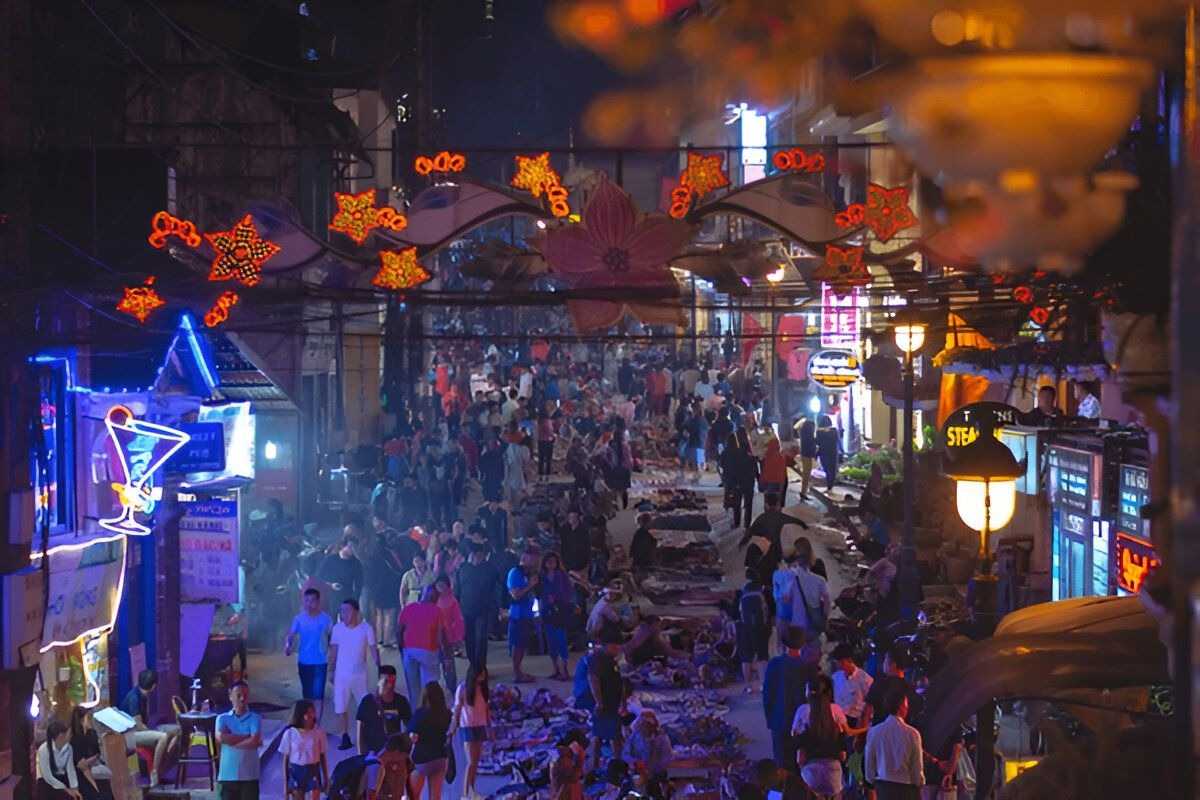
Planning Your Sapa Night Market Adventure
Preparing well for your visit to Sapa Night Market can transform an ordinary trip into a truly memorable experience. Knowing the best seasons to go, what weather to expect, and how to pack smartly ensures you’ll enjoy every moment without surprises. Drawing on local insight and stories from travelers like Linh and David, this section guides you through the essentials to plan your night market adventure with confidence and ease.
Take time to align your visit with seasonal events and pack gear that keeps you comfortable in Sapa’s mountain climate. Whether it’s a mild spring evening or a chilly winter night, the right preparation lets you focus on discovery and delight.
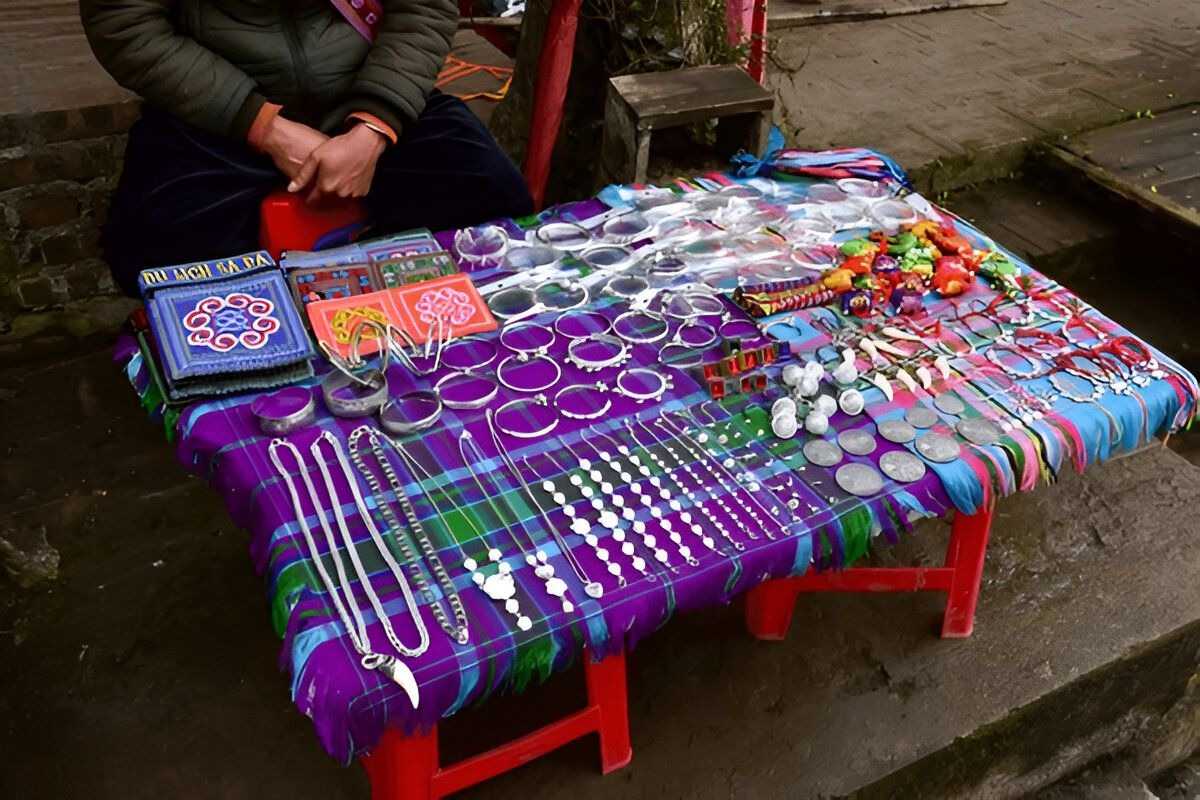
Best Time to Visit: Seasons, Weather & Events
Choosing the best time to visit sapa night market means balancing weather, crowd levels, and local celebrations. Each season in Sapa offers a different but equally special market experience.
Ideal months, what to expect in different seasons, and major events
Understanding Sapa seasons helps you pick the perfect moment to explore the market:
- Spring (March to May) and Autumn (September to November): These months offer mild, pleasant weather with clear skies and cooler evenings. The market is lively without overwhelming crowds, making it the most popular time for visitors.
- Monsoon Season (June to August): Expect frequent rains and higher humidity. The market stays open but can be quieter and more intimate. Umbrellas and waterproof gear are essential.
- Winter (December to February): Temperatures drop, sometimes low enough for frost or even snow on the surrounding peaks. The night market takes on a cozy atmosphere with warm drinks and festive lighting, attracting travelers seeking a unique experience.
- Major Events: The market buzzes during special dates like Vietnamese New Year (Tet) and ethnic minority festivals. These celebrations add color and cultural depth but can also bring larger crowds and occasional closures. Checking local event calendars before you travel is wise.
By choosing the right season and timing, you maximize your chances of enjoying the best of Sapa Night Market’s sights, sounds, and tastes.
Ready to plan your visit? Keep reading for practical packing tips and real traveler stories to get you fully prepared.
Linh's Rainy Season Resilience: Navigating the Market in a Downpour
Most travel guides will tell you the best time to visit Sapa is during the dry season for those postcard-perfect terraced rice field views, but my recent exploration of the Sapa Night Market wasn't just another walk; it was a vibrant, sprawling canvas telling a story unlike any other urban art installation I'd ever encountered, especially since I arrived during an unexpected downpour. This wasn't the picture-perfect Sapa I'd envisioned, but it quickly became an adventure that offered unique insights into the resilient spirit of the local community.
Stepping out of my guesthouse, the air was already thick with moisture, promising rain. Yet, a curious excitement bubbled within me. I’d heard so much about the Sapa Night Market, the heart of the town's evening pulse. As the first fat drops began to fall, then quickly escalated into a full-blown tropical deluge, my initial expectation of bustling crowds and clear pathways morphed. Instead, the market transformed into a more intimate, ethereal space. The usual vibrant chatter was softened by the drumming of rain on makeshift awnings, and the kaleidoscope of goods, from intricate Hmong textiles to fragrant street food, seemed to glow under the muted light. The rainy Sapa night market felt less like a tourist attraction and more like a glimpse into the authentic rhythm of life here.
Navigating the Sapa Night Market in rain quickly became an exercise in adaptability. Vendors, with practiced ease, pulled tarps tighter and rearranged their wares under the encroaching downpour. The scent of wet earth mixed with the tantalizing aroma of grilled corn and simmering pho filled the air, a unique olfactory signature of this damp evening. I found myself ducking under flimsy plastic shelters alongside locals, sharing knowing smiles as the rain momentarily intensified. There was a camaraderie in this shared experience, a quiet resilience that was deeply humbling. One vendor, her face etched with wrinkles from years under the Sapa sun and rain, offered me a steaming cup of ginger tea, a simple gesture of warmth that cut through the chill of the evening. The sound of rain on the tin roofs became a rhythmic backdrop to the muffled negotiations and laughter. My boots squelched gently in puddles, and the chill that crept into my bones was easily dispelled by the warmth of a freshly grilled skewer. This wasn't about avoiding the rain; it was about embracing it, becoming part of the market's pulse, rain and all.
What I discovered was that the rain, far from being a deterrent, actually enhanced the experience. The fewer crowds meant more genuine interactions with the vendors. I had the space and time to truly appreciate the intricate details of their handicrafts, to linger over conversations, and to observe their remarkable adaptability. This was a lesson in resilience, not just for me as a traveler, but for the entire market community. They didn't stop; they simply adjusted, showcasing an inherent "can-do" spirit that was incredibly inspiring.
Here are some insights and practical takeaways from my rainy market adventure:
- Embrace the Right Gear: A sturdy, compact rainy weather Sapa umbrella is essential, but a lightweight, waterproof jacket or poncho is even better, allowing for hands-free Browse. I found that my quick-drying trekking pants were far more effective than jeans.
- Seek Shelter, Find Community: Don't be afraid to huddle under a vendor's tarp or duck into a small, bustling eatery for a break. These moments often lead to the most authentic interactions and a chance to observe local life up close.
- Vendors Are Resilient: Observe how vendors adapt their stalls. This often means freshly prepared food is kept extra warm, and delicate crafts are carefully covered, showcasing their dedication.
- Sense of Accomplishment: There’s a distinct feeling of triumph after successfully navigating Sapa Night Market in rain. You’ll have a more authentic story to tell and a deeper appreciation for the local way of life.
- Food Tastes Better in the Rain: Seriously! A hot bowl of pho or a grilled sweet potato tastes infinitely more comforting when you're slightly damp and the air is cool.
My unexpected rainy evening at the Sapa Night Market was, without a doubt, one of the most memorable parts of my trip. It taught me that sometimes, the most authentic and enriching travel experiences come from embracing the unpredictable. It was a testament to the warmth of the people, the resilience of the human spirit, and the undeniable charm that even a downpour can add to a vibrant place.
Recommendation: If you find yourself in Sapa during the rainy season, do not let the weather deter you from visiting the Night Market. Instead, grab your best rain gear, a sense of adventure, and dive in. It’s an experience that will not only prepare you for rainy season Sapa Night Market conditions but will also leave you with unique stories and a profound appreciation for this incredible destination.
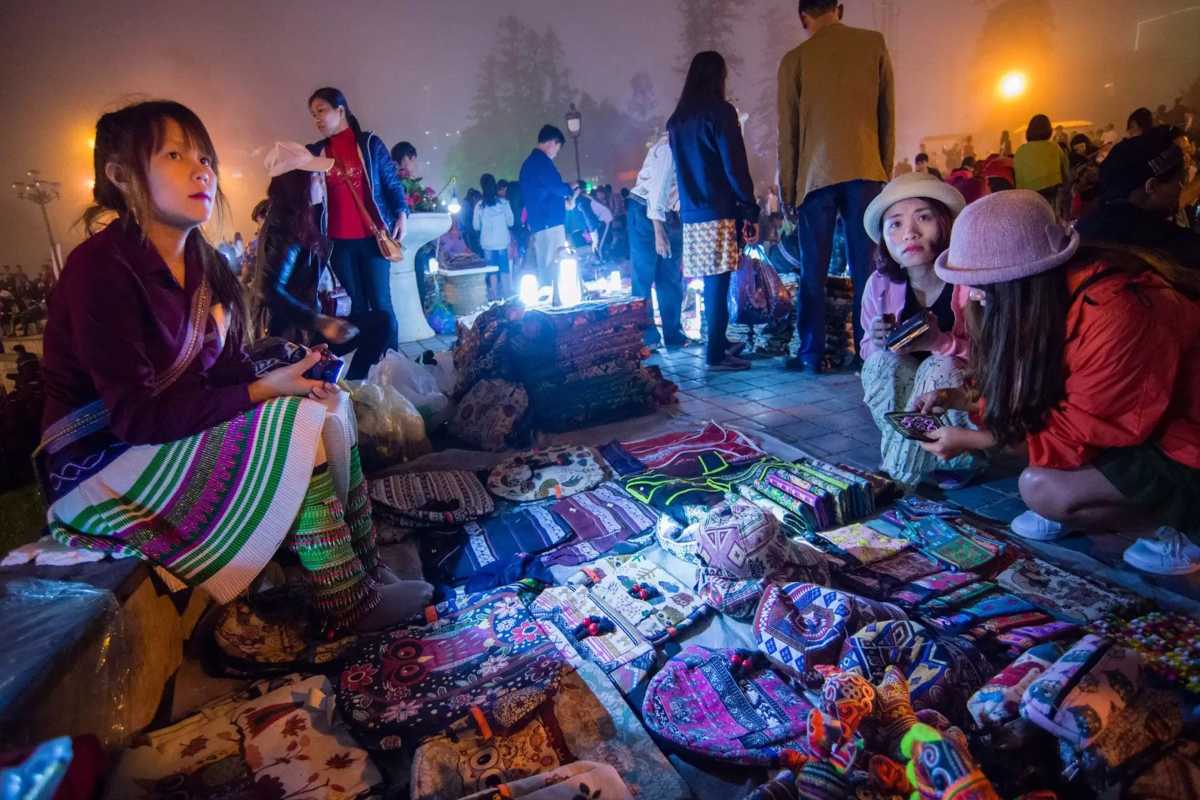
What to Pack: Essential Gear for a Sapa Night
Packing smart is key to enjoying your evening at Sapa Night Market comfortably, no matter the weather. This guide outlines the essentials you’ll want close at hand to stay warm, dry, and ready for everything the market offers.
Clothing recommendations, footwear, and useful accessories
Before heading out, consider these practical packing tips tailored for Sapa’s variable mountain climate:
- Layering Clothes: Temperatures can drop quickly after sunset, so bring layers. A warm jacket or fleece, long-sleeved shirts, and thermal wear work best.
- Comfortable, Sturdy Shoes: Choose shoes with good grip and support, ideally waterproof, as the streets can be wet or uneven. Sneakers or hiking shoes are great options.
- Small Backpack: Carry a lightweight backpack to hold your essentials and purchases without hassle.
- Power Bank: Keep your devices charged for photos, navigation, or translation apps during your night market adventure.
- Reusable Water Bottle: Stay hydrated with a refillable bottle to reduce plastic waste.
- Compact Umbrella or Raincoat: Weather can change unexpectedly; pack a small umbrella or waterproof jacket for rainy moments.
Bringing these items helps you focus on enjoying the vibrant sights and sounds of Sapa Night Market without discomfort or distraction.
If you want personalized packing advice or suggestions for local weather updates before your trip, Asia Travel Links is happy to assist.
David's Packing Wisdom: Staying Warm and Dry
My first evening at the Sapa Night Market was a wake-up call, and not just because of the intoxicating aromas from the food stalls. It was a stark lesson in underestimating the mountain chill. While I’d prepared for the daytime warmth, the evening's crisp air, especially after sunset, quickly bit through my relatively thin layers. It turned out that staying warm at Sapa Night Market was just as crucial as dodging the rain. My initial anticipation of leisurely Browse quickly shifted to a subtle shiver, a constant reminder that I hadn't quite packed for the full spectrum of Sapa's unpredictable weather.
As the sun dipped below the peaks, painting the sky in hues of orange and purple, a different kind of atmosphere settled over the Sapa Night Market. The crowds, though still lively, seemed to huddle a little closer, and the steam rising from the hot food stalls became even more inviting. I found myself envious of locals wrapped in thick, indigo-dyed blankets and visitors sporting surprisingly robust windbreakers. My light jacket, while fashionable, offered little defense against the damp, cold weather Sapa can deliver, even without rain. It was a humbling moment, realizing that a truly immersive experience often comes down to the simple comforts of being well-prepared.
The next evening, armed with newfound wisdom (and a quick dash to a local shop for some additions), my experience was transformed. It wasn't just about avoiding discomfort; it was about truly being present, able to savor every scent, sound, and sight without the distraction of chattering teeth. I was immensely glad I had invested in some thermal socks Sapa visitors often rave about, and a lightweight, genuinely waterproof jacket Sapa is known for requiring, which also doubled as an excellent windbreaker. The layers underneath made all the difference, allowing me to adjust as I moved between the open-air market and the more sheltered food stalls.
Beyond the clothing, one small item proved to be an absolute lifesaver: a portable power bank. Between snapping endless photos of the vibrant textiles, the bustling food stalls, and the charming local faces, my phone battery was plummeting faster than expected. Having that power bank for photos Sapa offered was a godsend, ensuring I didn't miss capturing any of the market's magic. This practical lesson underscored the comfort derived from being well-prepared, turning potential frustration into a seamless experience.
Here are some insights and practical takeaways from my packing revelations:
- Layering is Key: Even if the day starts warm, Sapa evenings, especially at the Night Market, can get surprisingly chilly. Pack thin, insulating layers that you can easily add or remove.
- Essential Outerwear: A good quality, lightweight waterproof jacket Sapa is crucial, as it will protect against both unexpected rain and the persistent wind. A windbreaker layer underneath is a bonus.
- Don't Forget Your Feet: Warm, moisture-wicking socks (like thermal or wool blends) are invaluable. Comfortable, closed-toe shoes are also highly recommended for navigating the market's uneven terrain.
- Power Up: A fully charged portable power bank is a must. You'll be taking more photos and videos than you think, especially in the atmospheric lighting of the market.
- Small Daypack: A compact daypack is perfect for stowing extra layers, water, and any treasures you pick up at the market.
My packing wisdom, hard-earned through a slightly chilly first night, profoundly enhanced my subsequent visits to the Sapa Night Market. Being comfortably warm and prepared allowed me to truly connect with the vibrant energy and unique charm of this incredible place, turning what could have been minor discomforts into enjoyable aspects of the adventure.
Recommendation: When planning your trip to Sapa, especially if you intend to explore the Sapa Night Market, pay close attention to your evening attire. Invest in good layers, a reliable waterproof jacket, and don't underestimate the power of a portable charger. Trust me, the comfort of being well-prepared will allow you to fully immerse yourself and enjoy every moment of this unforgettable experience.
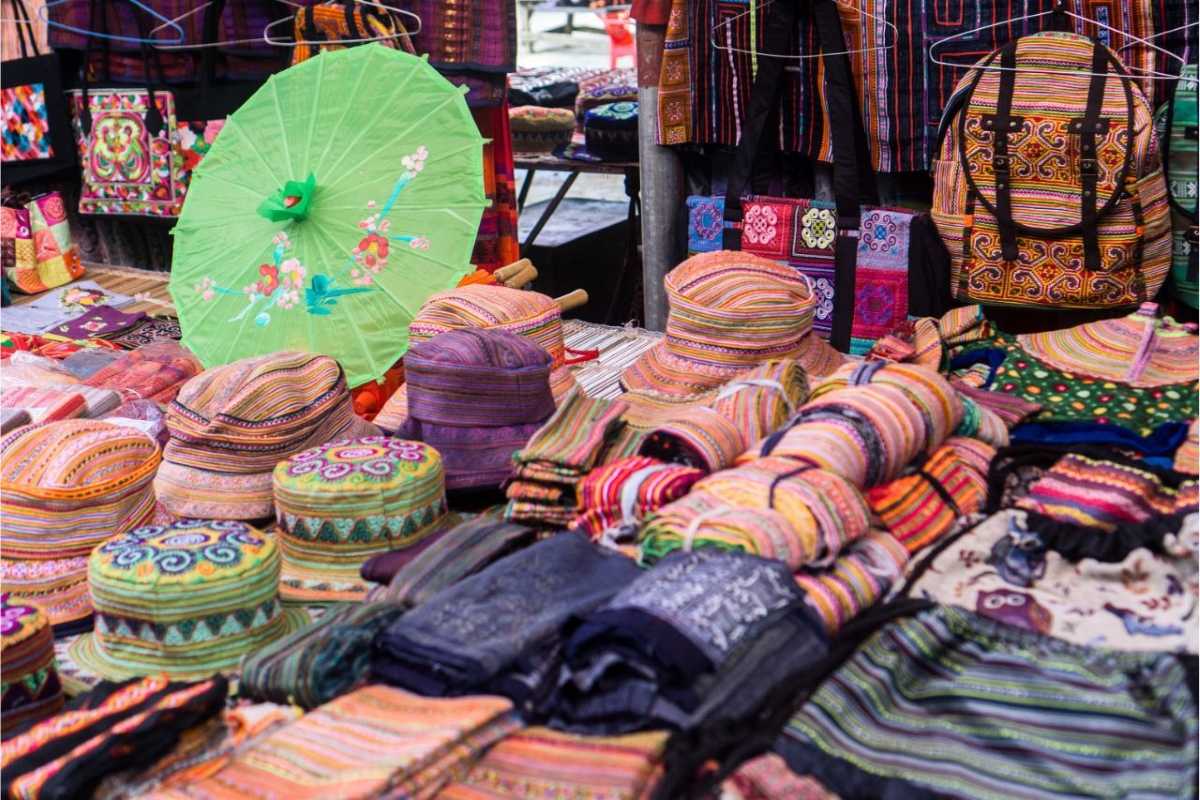
What to Eat: Sapa Night Market’s Top Food Experiences
The Sapa Night Market offers a rich tapestry of flavors that reflects the vibrant cultural diversity of the region. From sizzling street food stalls to unique ethnic dishes, this culinary adventure invites you to taste the authentic tastes of Sapa while enjoying a lively atmosphere. Whether you’re a seasoned foodie or a curious first-timer, this section will introduce you to the must-try foods and share tips to enjoy them safely and confidently.
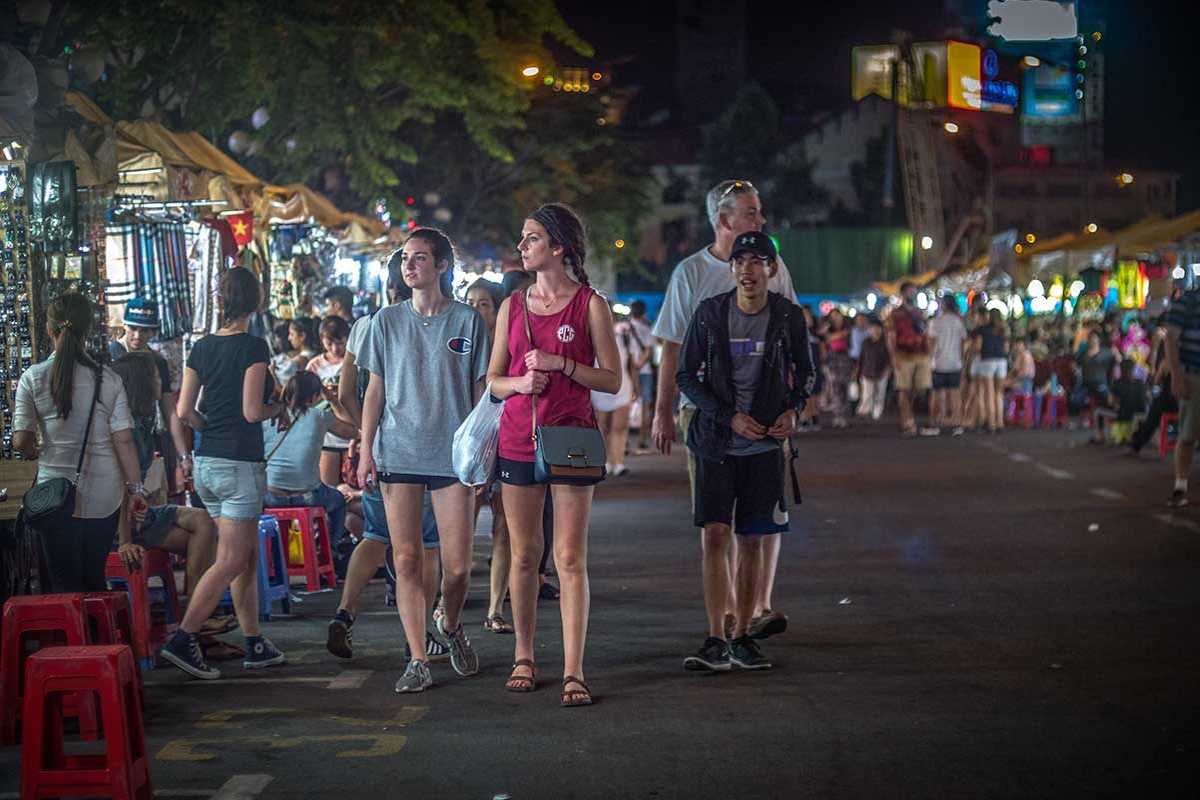
Street Food Specialties You Can’t Miss
Sampling iconic street foods is a highlight of any visit to Sapa Night Market. Here are some local favorites to look for, complete with flavor notes and ordering tips to help you navigate the menu with ease.
Grilled skewers, thắng cố, bamboo rice, and more local favorites
Delve into these signature dishes that define the Sapa Night Market dining experience:
- Grilled Skewers (Xiên Nướng): Expect a variety of options including pork, chicken, and fresh local vegetables, all marinated and grilled over charcoal. The smoky aroma is irresistible, and the skewers are often served with spicy chili sauce or lime salt.
- Thắng cố (pronounced “tang koh”): A traditional horse meat hotpot beloved by ethnic minorities such as the Hmong. It’s a rich, savory stew that adventurous eaters should definitely try to experience authentic local flavors.
- Bamboo Rice (Cơm Lam): Sticky rice cooked inside bamboo tubes over an open flame, giving it a distinct woody aroma and tender texture. It’s a simple but delightful treat, often served with salt or sesame.
- Pronunciation Tips: Knowing the Vietnamese names like “Xiên Nướng” and “Thắng cố” can enhance your ordering experience and endear you to vendors.
These dishes capture the essence of Vietnamese mountain cuisine and reflect the cultural heritage of Sapa’s ethnic groups. Enjoy exploring these culinary treasures as part of your night market journey.
End your culinary exploration confidently by trying these specialties and embracing the local food culture at Sapa Night Market.
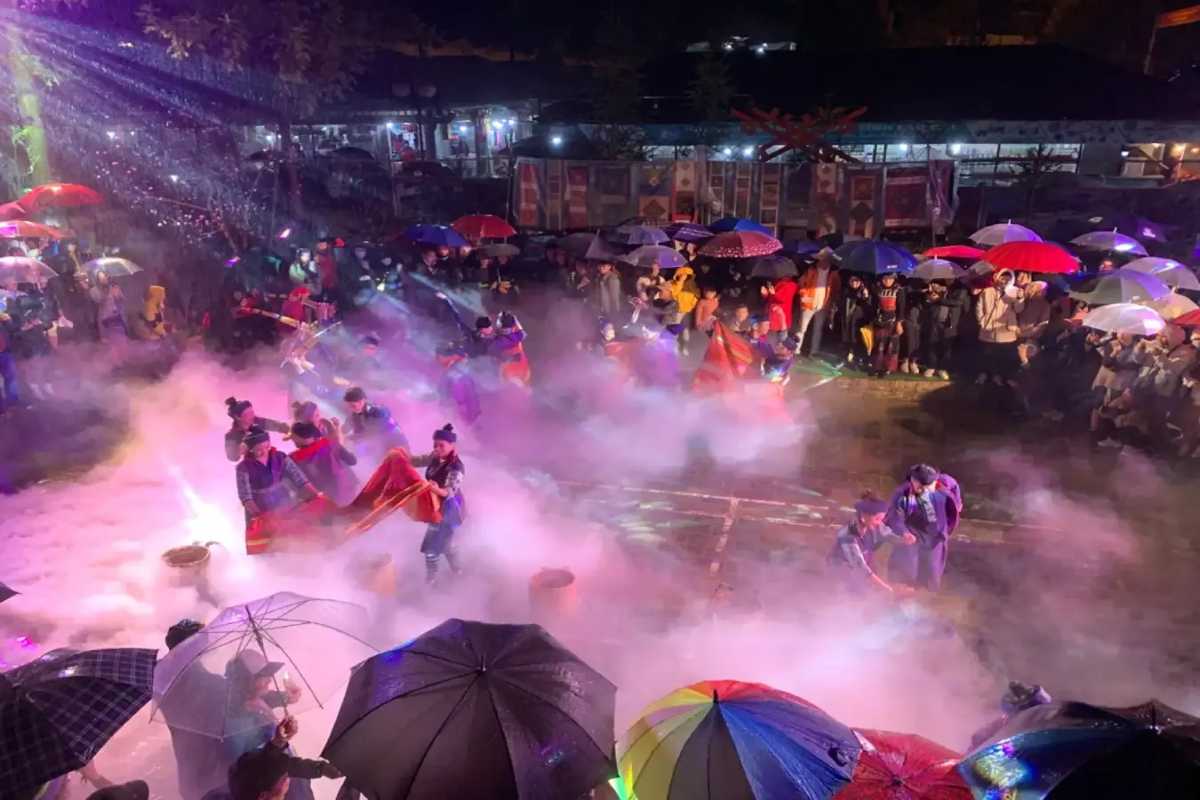
Local Delicacies Worth Trying
Beyond the well-known dishes, Sapa Night Market is a treasure trove of rare and authentic foods that celebrate the rich heritage of its ethnic minorities. For culinary adventurers eager to taste the true flavors of the region, these local delicacies offer a unique window into the traditions of the Hmong, Dao, Tay, and other communities.
Dishes unique to Sapa’s ethnic minorities and regional cuisine
Explore these lesser-known but equally captivating specialties found at the market:
- Hmong Food: Discover dishes featuring wild mushrooms and fresh herbs, often foraged from the surrounding forests. These ingredients add earthy, aromatic flavors unique to the highlands.
- Dao Cuisine: Look for herbal infusions and dishes prepared with medicinal plants, reflecting the Dao community’s deep connection to natural remedies.
- Tay Specialties: Try local wild vegetables cooked simply to preserve their fresh, crisp taste—often served with sticky rice or dipping sauces.
- Recommended Stalls and Areas: Some vendors specialize in ethnic recipes passed down through generations. Seek out stalls near the northern end of the market or ask local guides for hidden gems.
Sampling these authentic delicacies allows you to experience the heart of Sapa’s ethnic culture in every bite. This section encourages you to venture beyond common choices and truly embrace the diverse culinary landscape.
Don’t miss the chance to savor these rare flavors and enrich your night market visit with deep cultural appreciation.
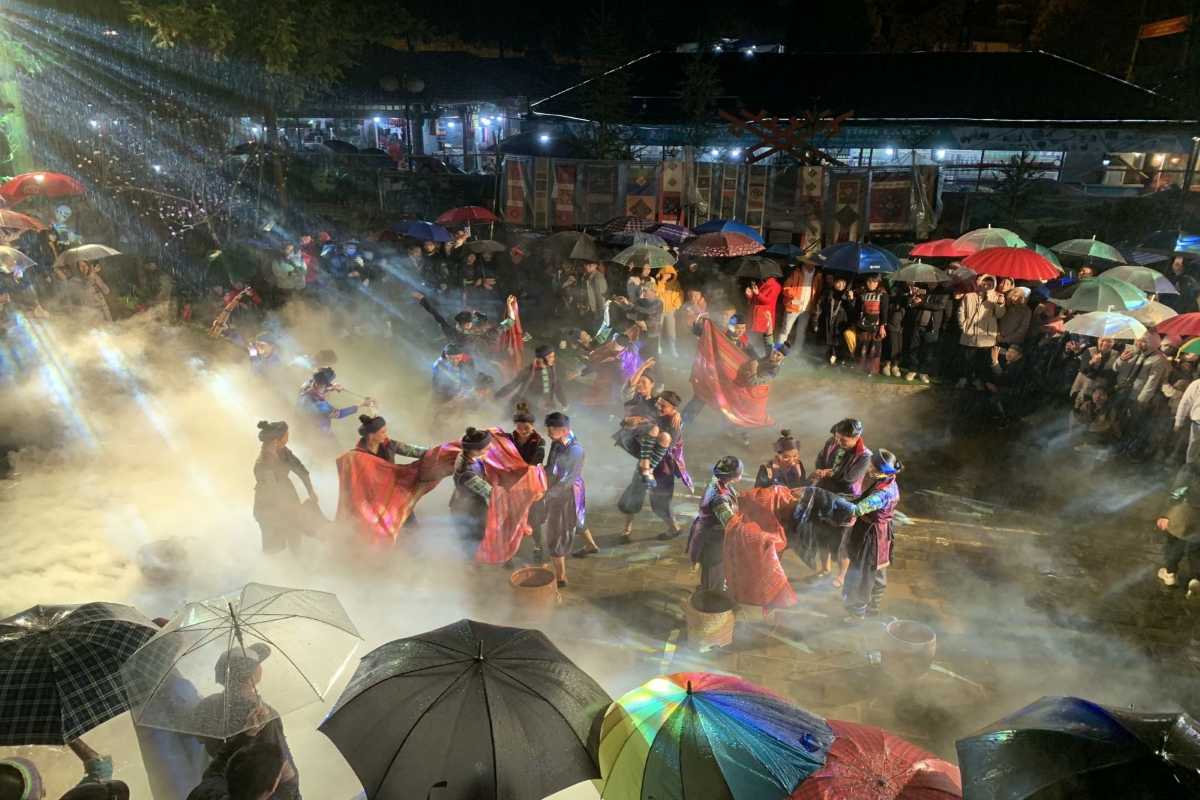
Sweet Treats and Warm Drinks for Chilly Evenings
When the mountain air turns crisp, nothing beats the comfort of warm snacks and drinks at Sapa Night Market. These treats not only satisfy your sweet tooth but also help you soak in the cozy atmosphere unique to the highland evenings.
Sapa chestnuts, herbal teas, and must-try desserts
Here are some local favorites that warm both body and soul:
- Roasted Sapa Chestnuts: Famous across northern Vietnam, these chestnuts offer a sweet, smoky flavor with a soft, buttery texture. Vendors roast them fresh over open flames, filling the air with an inviting aroma.
- Local Corn Wine (Rượu Ngô): A traditional fermented drink made from corn, often sipped slowly to appreciate its strong, earthy notes.
- Herbal Teas: Made from indigenous herbs, these teas provide gentle warmth and a taste of local medicinal traditions.
- Vietnamese Desserts (Chè): Sweet soups featuring beans, tapioca, or fruit, perfect for a light but satisfying end to your food adventure.
These sweet and warm delights are perfect companions for cool nights, adding an extra layer of sensory pleasure to your Sapa Night Market experience. Don’t miss out on trying them as you explore.
Warm up your evening with these treats and enjoy every flavorful moment at the market.
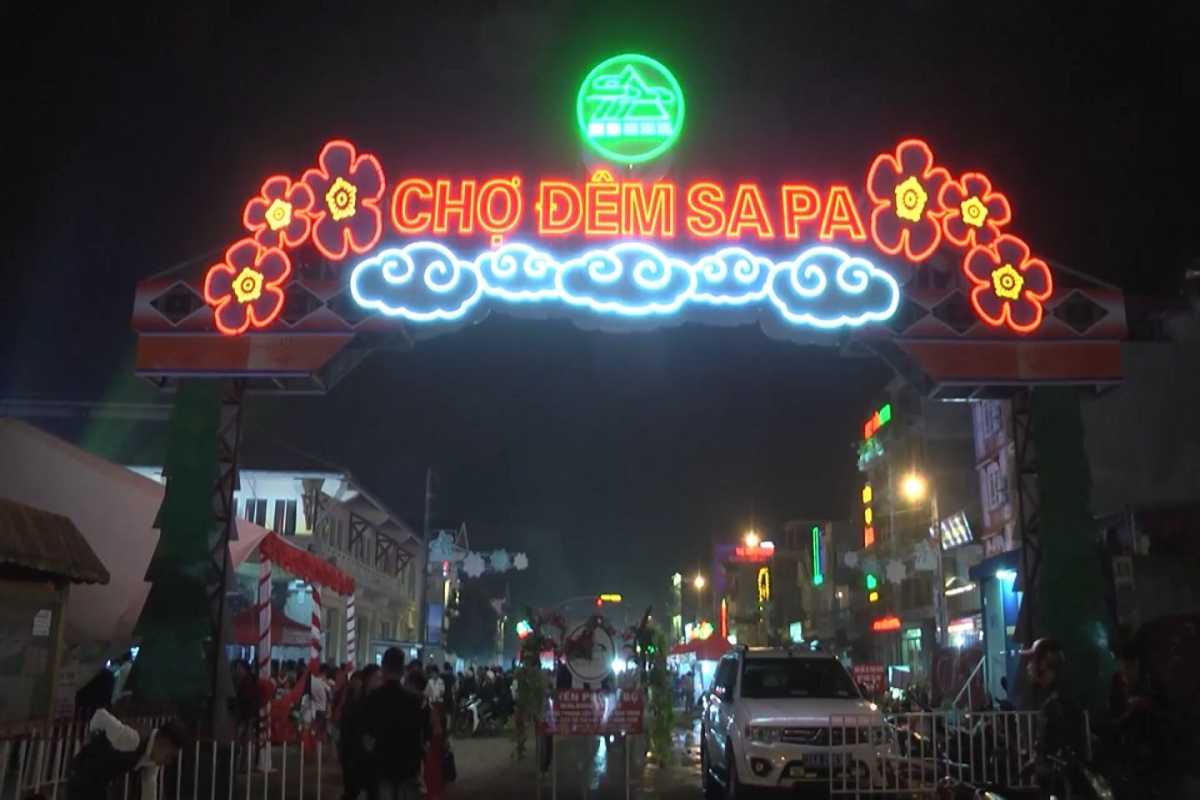
Tips for Safe and Delicious Eating
Enjoying the diverse flavors at Sapa Night Market is one of the highlights of any visit, but staying safe while trying new foods is equally important. This section offers practical tips to help you savor local cuisine confidently and worry-free.
How to pick reputable stalls and food safety advice
To ensure your food is both tasty and safe, keep these pointers in mind:
- Choose Busy Stalls: Opt for vendors with high customer turnover. Freshly cooked food and quick service often indicate good hygiene and quality.
- Observe Hygiene Practices: Look for vendors who use gloves, maintain clean surfaces, and cook food thoroughly before serving.
- Carry Hand Sanitizer: Use sanitizer before eating, especially after handling money or touching surfaces.
- Drink Bottled Water: Always choose sealed bottled water and be cautious with ice, as tap water quality can vary.
Following these simple steps allows you to explore the market’s culinary delights with peace of mind.
Stay safe and enjoy every bite at Sapa Night Market by choosing wisely and following these food safety tips.
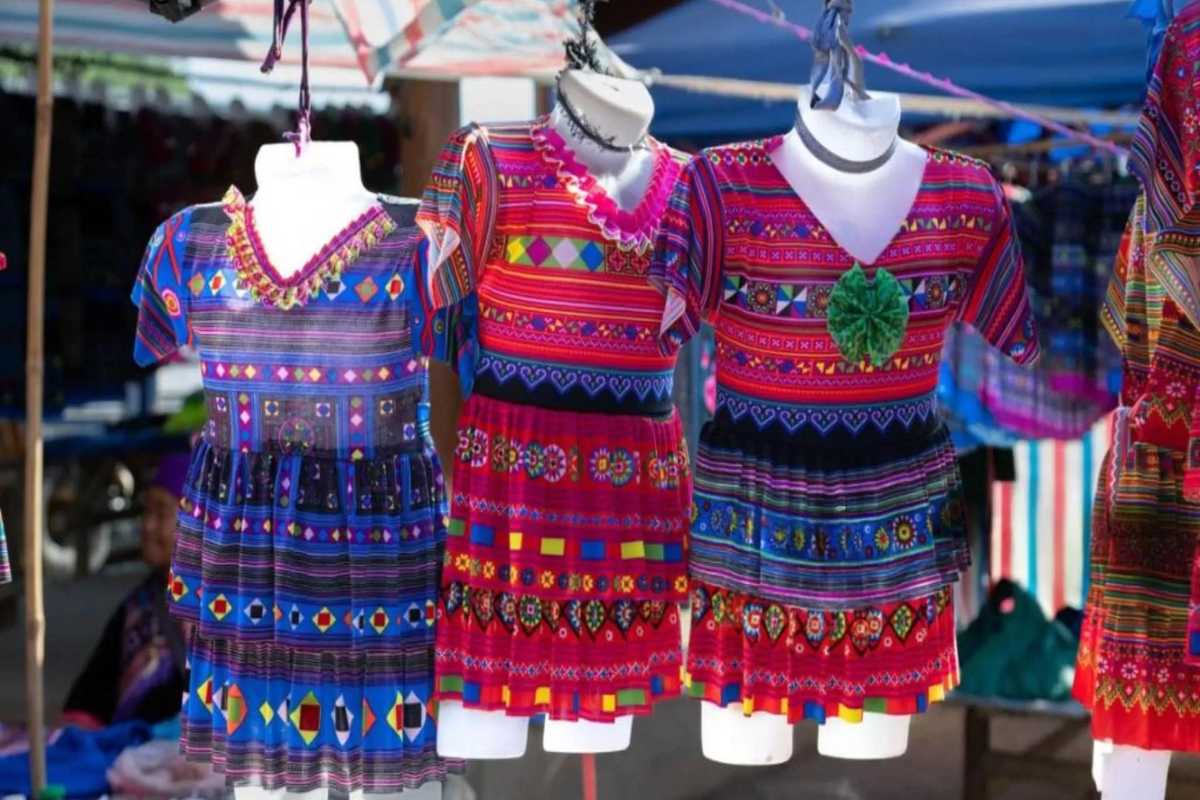
Shopping and Souvenirs at Sapa Night Market
Shopping at Sapa Night Market offers more than just souvenirs—it’s a chance to connect with the rich culture of Sapa’s ethnic communities and support their traditional livelihoods. Knowing what to buy, how to shop ethically, and which crafts are truly authentic will enrich your experience and ensure your purchases make a positive impact.
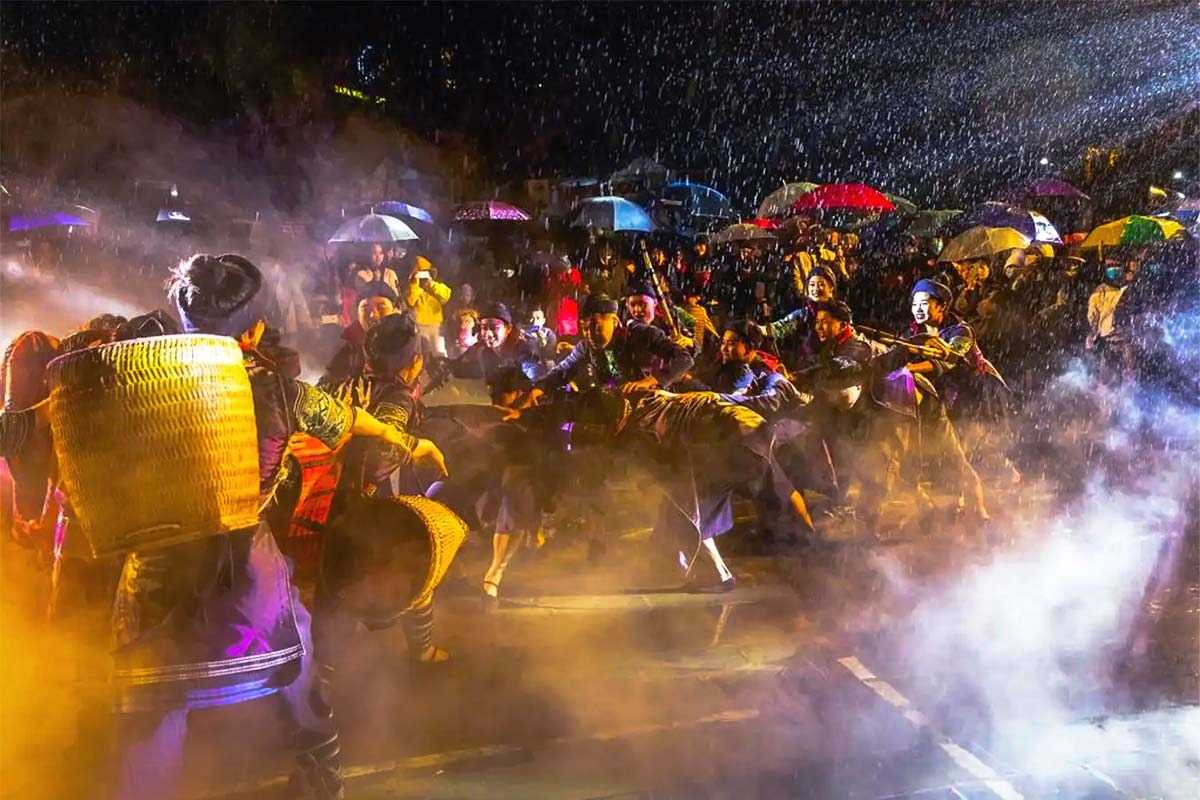
Unique Handicrafts and Local Creations
The market is filled with remarkable handmade items that showcase the skill and heritage of Sapa’s ethnic groups. Understanding the stories behind these crafts helps you appreciate their value even more.
Embroidery, silver jewelry, and handmade goods from Sapa’s ethnic groups
Explore the exquisite artistry found in these popular local products:
- Hmong and Red Dao Embroidery: Intricate patterns and vibrant colors characterize their textiles. Each design tells a story and reflects the identity and traditions of the artisans.
- Silver Jewelry: Crafted with care and cultural significance, silver pieces are a hallmark of ethnic adornment, symbolizing status and heritage.
- Other Handmade Crafts: Hemp textiles, carved wooden items, and products dyed with natural plant-based colors offer unique gifts that celebrate rural craftsmanship.
- Supporting Local Families: Buying these items directly from artisans ensures your money supports the communities and helps preserve these ancient crafts.
Choosing authentic, handmade goods lets you take home meaningful souvenirs and encourages the continuation of Sapa’s cultural traditions.
Shop thoughtfully and make your souvenirs count at Sapa Night Market.
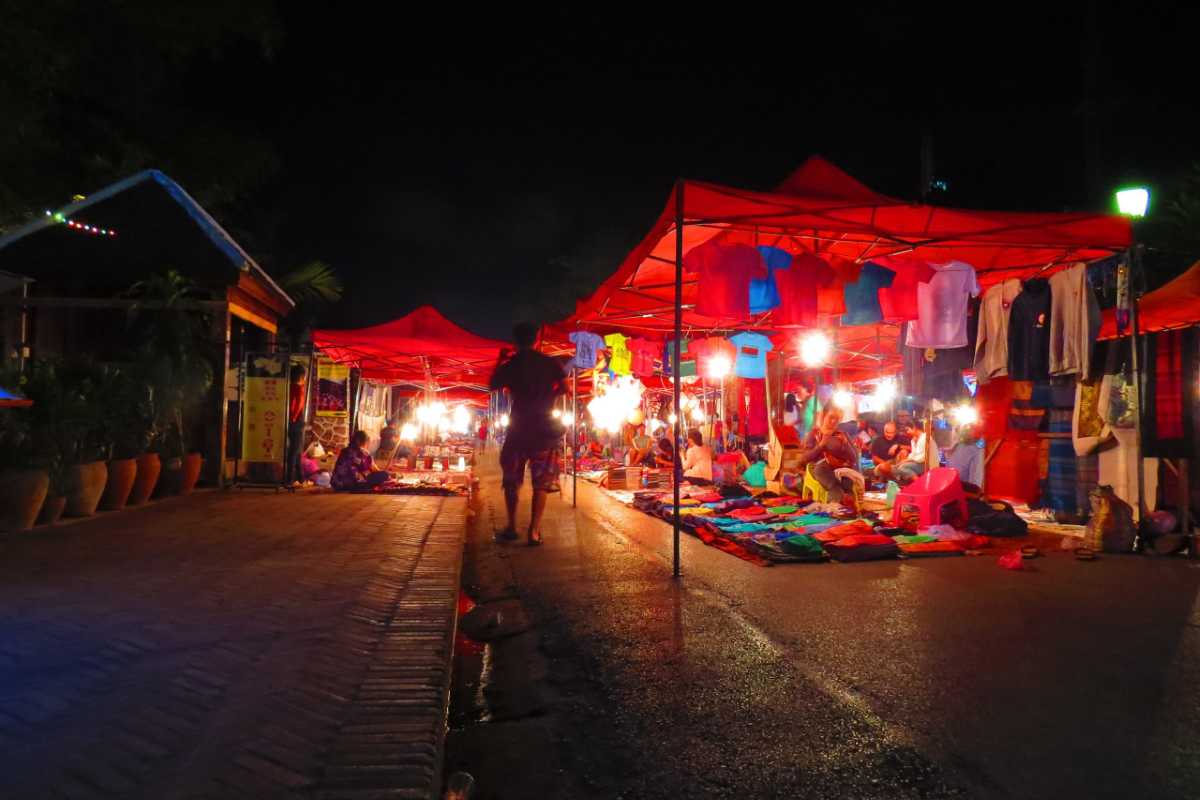
How to Bargain Like a Local
Mastering the art of bargaining at Sapa Night Market not only helps you get a fair price but also builds goodwill with local vendors. Approaching negotiations with respect and a friendly attitude makes the experience enjoyable for both sides.
Friendly negotiation tips and how to shop respectfully
Here’s how to bargain smartly and kindly at the market:
- Bargaining Range: Aim for about 10 to 30 percent off the initial asking price. This range is typical and considered fair by most vendors.
- Start with a Smile: Approach with warmth and light humor. A friendly attitude often opens the door to better deals and pleasant conversations.
- Respect the Culture: Remember, bargaining is part of local customs but should be done fairly to respect the livelihoods of the sellers. Avoid aggressive haggling.
- Know When Not to Bargain: Food prices are usually fixed. Focus your negotiation efforts on handicrafts and souvenirs instead.
By following these guidelines, you’ll not only save money but also enjoy a richer cultural interaction during your Sapa Night Market shopping.
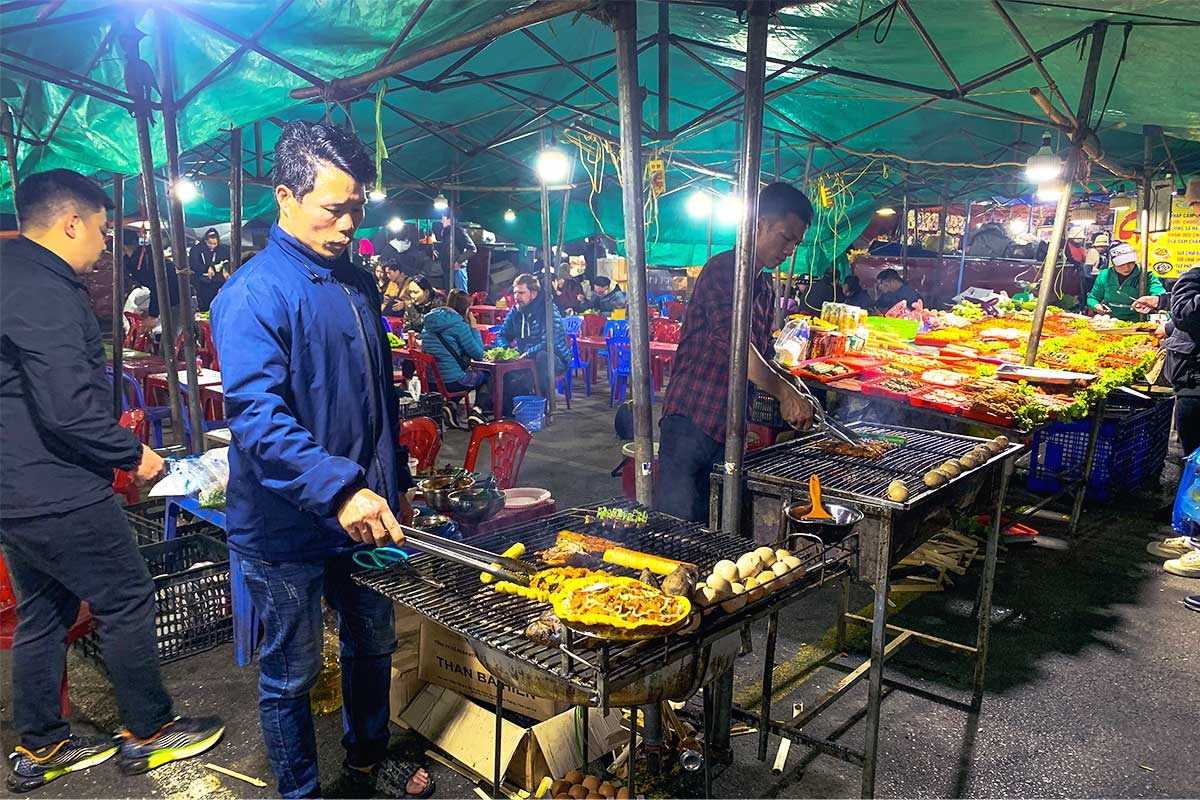
What to Look For and What to Avoid
When shopping at Sapa Night Market, distinguishing authentic treasures from mass-produced items is key to a satisfying purchase. This guidance helps you choose meaningful souvenirs while supporting responsible practices.
Ensuring authenticity and supporting local artisans
Here are important points to keep in mind to shop wisely and ethically:
- Handmade vs. Mass-Produced: Genuine crafts show slight imperfections and unique details, unlike uniform factory-made goods. Look for signs of handcrafting like uneven stitches or natural dye variations.
- Natural Materials and Traditional Patterns: Authentic items use natural fibers, traditional colors, and culturally significant motifs that reflect local heritage.
- Avoid Illegal Wildlife Products: Stay clear of souvenirs made from protected species or materials that threaten local ecosystems.
- Buy Directly from Artisans: Whenever possible, purchase from the creators themselves to ensure fair compensation and help sustain their communities.
Following these tips protects you from disappointment and helps preserve Sapa’s rich artisan culture.
Shop smart and ethical to make your Sapa Night Market souvenirs truly meaningful.
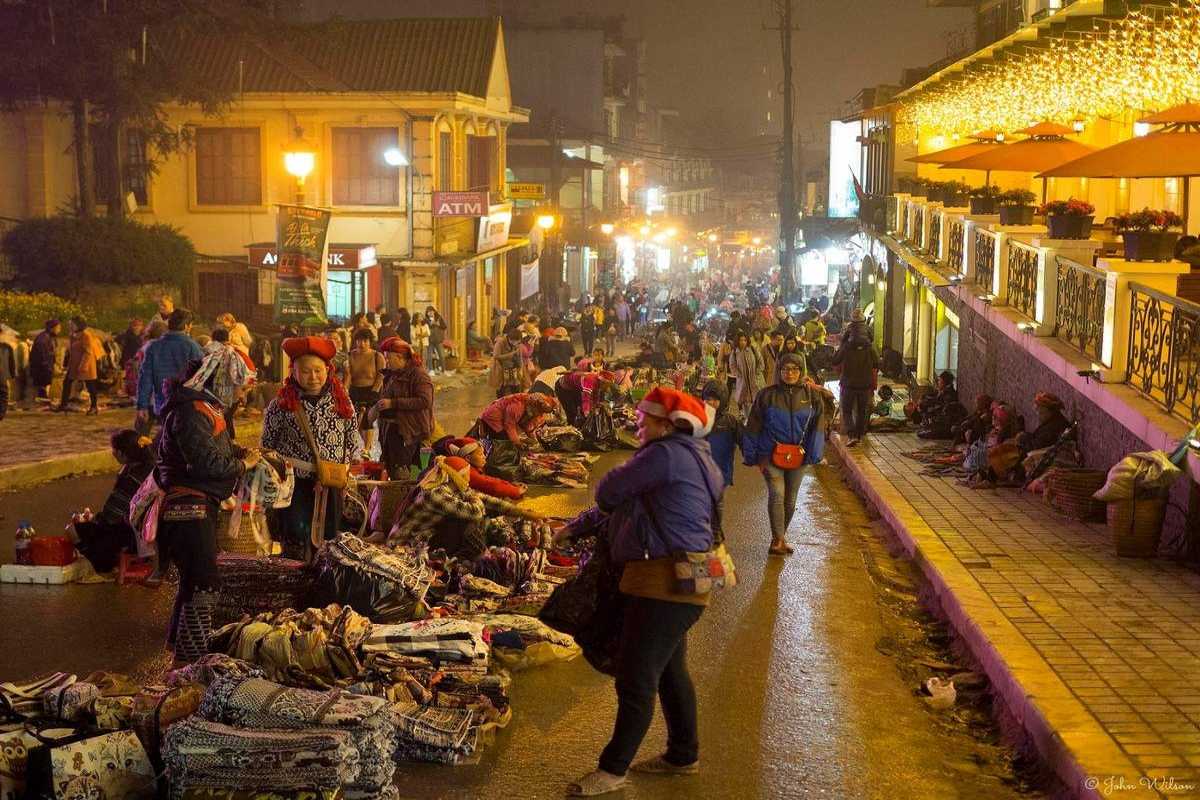
Beyond the Stalls: Immersive Cultural Encounters
At Sapa Night Market, the true magic lies beyond shopping—it's about connecting with the vibrant cultures and warm-hearted people who shape the market’s unique spirit. This section invites you to engage deeply, learn firsthand, and create meaningful memories with Sapa’s diverse communities.
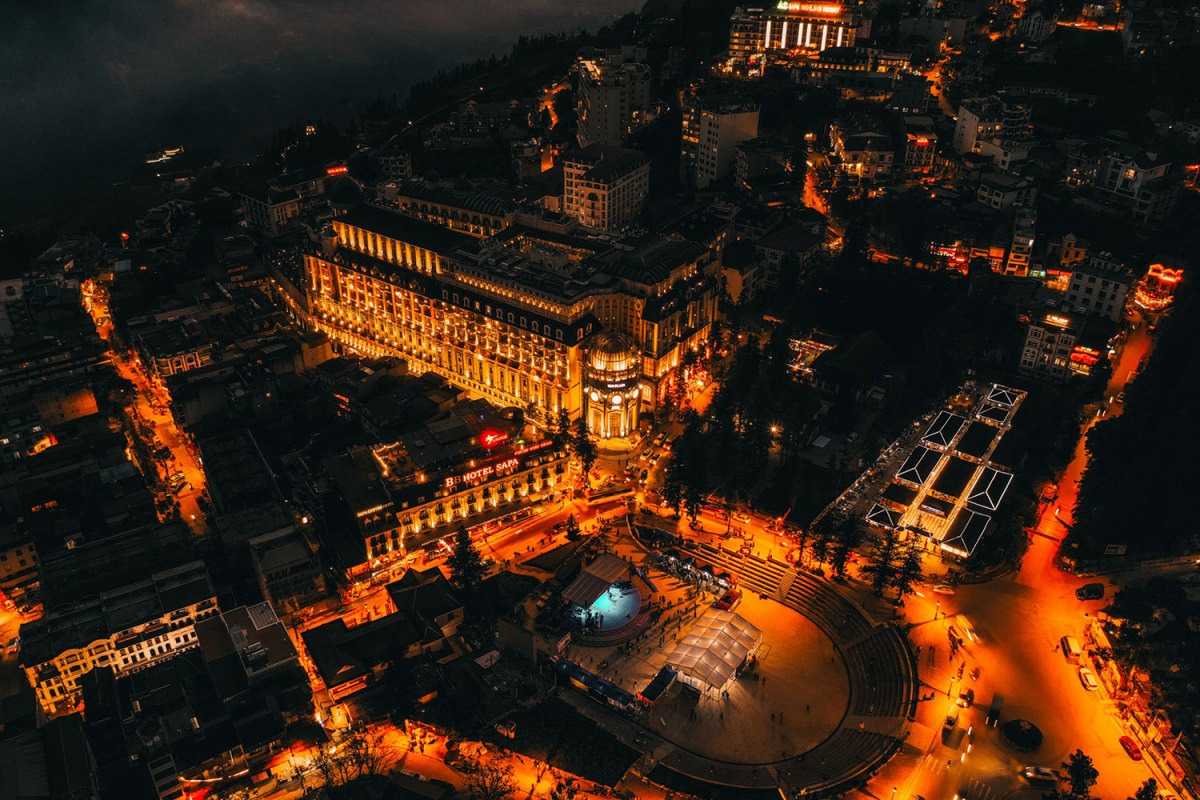
Engaging with Local Artisans & Vendors
Making genuine connections with the artisans and vendors at Sapa Night Market enriches your visit and honors the traditions behind their crafts.
How to interact respectfully and learn from the community
Here are some respectful ways to engage and learn while visiting the market:
- Polite Greetings: Start interactions with a friendly “Chào anh/chị” to show respect and openness.
- Ask Permission for Photos: Always seek consent before taking pictures of vendors or their products to honor privacy and cultural norms.
- Light Conversation: Engage with simple questions or compliments; many vendors appreciate sincere interest.
- Learn Basic Vietnamese Phrases: Even a few words can break the ice and create a warm atmosphere.
These thoughtful gestures help build trust and create memorable cultural exchanges during your Sapa Night Market visit.
Sophie's Memorable Chat: Learning from a Hmong Weaver
Amongst the vibrant chaos and enticing aromas of the Sapa Night Market, one particular interaction stands out vividly in my memory. It wasn't about a purchase, though I did end up with a beautiful keepsake. It was about a connection, a shared moment that transcended language barriers and provided a profound insight into the heart of Sapa's culture. While many come to the market for the bustling atmosphere and delicious food, my deepest experience came from meeting locals at Sapa Night Market, specifically a resilient and warm Hmong weaver.
I was drawn to a stall where intricate, hand-stitched textiles in rich indigo and vibrant patterns were displayed. Unlike some of the more overtly tourist-oriented stalls, this one exuded an authentic, almost quiet dignity. An older Hmong woman sat patiently, her hands seemingly never still, meticulously working on a piece of fabric. Her face was etched with a lifetime of stories, her eyes kind and observant. As I admired a particularly beautiful wall hanging, she looked up, a gentle smile gracing her lips.
Our initial communication was a dance of gestures and a few shared Vietnamese words I haltingly managed. I pointed to her work, expressing my admiration. With surprising alacrity, she picked up a smaller, unfinished piece and, with graceful, practiced movements, began to demonstrate the process. She showed me how she threaded the needle, meticulously pulling the thread through the tightly woven fabric, creating patterns that were both geometric and fluid. Her fingers, nimble and strong, moved with a rhythm born of generations of tradition. This wasn't just textile making Sapa style; it was a living art form, each stitch a testament to patience, skill, and cultural heritage.
She pointed to different patterns, attempting to convey their meaning – perhaps stories of mountains, rice fields, or family. Though I understood only fragments, the warmth in her eyes and the pride in her gestures spoke volumes. I felt a deep appreciation for the craft and the cultural significance of these patterns, realizing that each piece held a narrative far richer than just its aesthetic appeal. It was an unexpected learning experience, a humbling moment of witnessing a tradition firsthand, and a powerful reminder that true travel often lies in these spontaneous, human connections. The feeling of stepping away from that stall, holding a small, intricately embroidered purse, was profoundly different from any other souvenir purchase. It felt like carrying a piece of her story, a fragment of the Hmong spirit.
Here are some insights and practical takeaways from my encounter:
- Be Open and Respectful: Approach interactions with genuine curiosity and respect. A simple smile or an attempt at a few local words goes a long way.
- Seek Out Authentic Artisans: Look for stalls where people are actively creating, not just selling mass-produced items. These are often where the most meaningful connections are forged.
- Observe and Learn: Even without a common language, you can learn so much by simply observing the artisans at work. Their techniques and dedication speak volumes.
- Appreciate the Craft: Understand that handmade items carry the time, skill, and cultural heritage of the maker. This deepens your appreciation and makes any purchase more meaningful.
- Support Local Traditions: By purchasing directly from artisans, you are not only gaining a unique souvenir but also directly supporting their livelihood and the continuation of ancient traditions.
My memorable chat with the Hmong weaver at the Sapa Night Market was more than just an exchange of goods; it was a profound cultural immersion. It taught me the immeasurable value of slowing down, connecting on a human level, and allowing unexpected moments of learning to shape your travel narrative.
Recommendation: If you visit the Sapa Night Market, I wholeheartedly recommend seeking out the local artisans, particularly the Hmong weavers. Allow yourself the time and openness to connect, even if briefly. These genuine interactions, like learning from Sapa artisans, are the true treasures of travel, offering insights and memories far more valuable than any material possession.
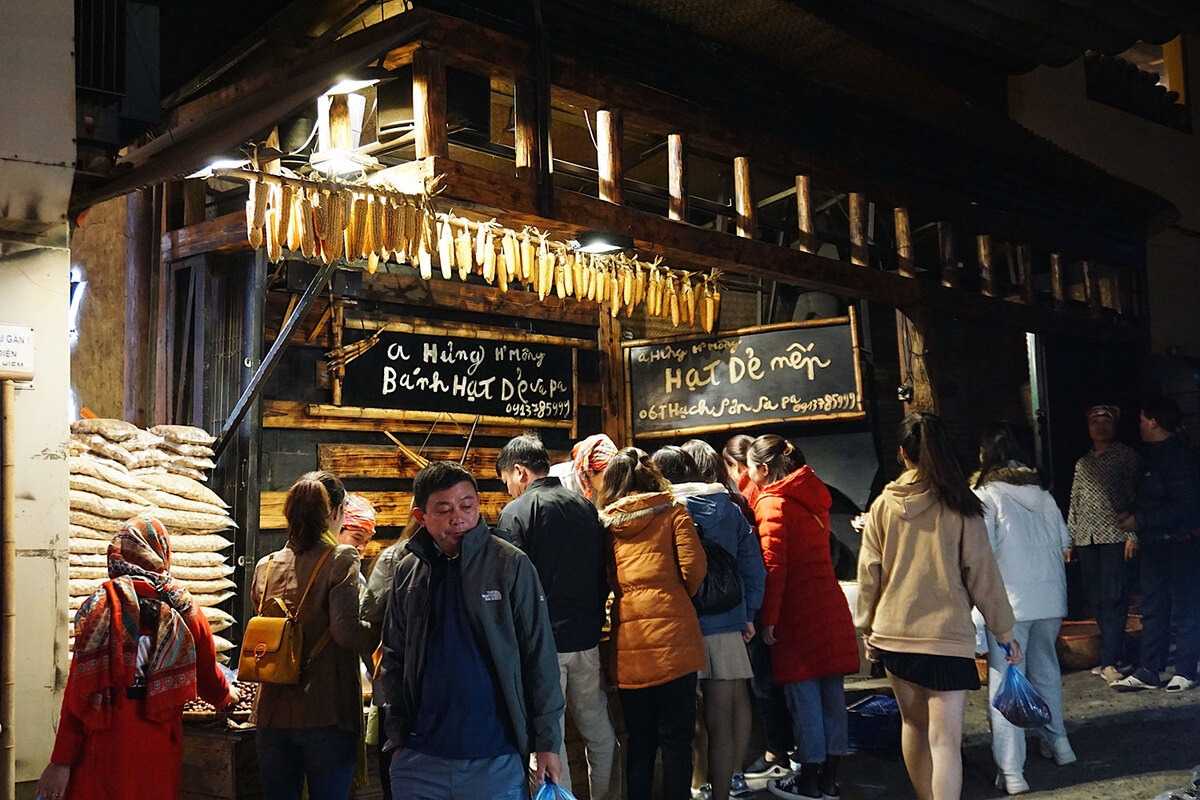
Understanding the Ethnic Diversity of Sapa
The vibrant culture of Sapa Night Market is deeply shaped by the many ethnic groups that call this region home. Knowing a bit about these communities enhances your appreciation and experience of the market.
Brief overview of major ethnic groups and their presence at the market
The market is a lively meeting point for several ethnic communities, each with its own distinctive traditions:
- Hmong: Known for their colorful embroidered clothing and intricate silver jewelry, the Hmong bring vivid patterns and rich cultural crafts to the market.
- Red Dao: Recognizable by their striking red headscarves and delicate hemp textiles, the Red Dao women offer unique handcrafted goods and herbal remedies.
- Tay: The Tay contribute with their traditional farming knowledge and woven goods, enriching the market’s cultural tapestry.
- Giay: Known for their folk songs and distinct attire, the Giay add a melodic and visual dimension to the market experience.
Encountering these groups in their traditional dress and craftsmanship offers a glimpse into the diverse heritage that thrives within Sapa Night Market.
This cultural richness invites visitors to explore with respect and curiosity, deepening their connection to the place and its people.
Chen's Insight: A Glimpse into Dao Traditions
The Sapa Night Market is a symphony for the senses, a whirlwind of sights, sounds, and smells. Yet, amidst the vibrant tapestry of goods and chatter, it's the faces of the people that often tell the most profound stories. For me, one particular evening, my journey through the market transcended mere commerce when I caught sight of the distinctive red headscarves of the Red Dao women. Their attire, so strikingly different from the Hmong I had mostly encountered, sparked an immediate curiosity. This led to a spontaneous interaction that deepened my understanding of the market, offering a glimpse into the living heart of its traditions, and fulfilling a desire to move beyond surface-level observation by learning about Dao traditions Sapa market has to offer.
I had the good fortune of having a local guide with me that evening, which proved invaluable. As we paused near a stall selling medicinal herbs, I pointed to a group of Red Dao women, their intricately embroidered scarves acting as beacons in the bustling market. My guide, sensing my interest, facilitated an introduction. With a respectful bow and a few introductory words, we were welcomed into a brief, yet incredibly enriching, conversation.
The woman I spoke with, her hands gnarled from years of work, held herself with an quiet dignity. Through my guide's translation, I asked about her striking headscarf. What followed was a fascinating revelation about Red Dao traditions. She explained that the red headscarves, far from being just decorative, are a significant marker of a married woman. The elaborate embroidery, she detailed, isn't just aesthetic; it often tells stories, with specific patterns representing protection, prosperity, or even elements of their origin myths. One particular detail that truly resonated with me was her explanation of a small, almost hidden, silver charm often sewn into the scarf. She shared that this charm, often passed down through generations, is believed to protect the wearer and her family, especially during the challenging times of harvesting.
This wasn't just an anecdotal tidbit; it was a living piece of cultural knowledge Sapa holds, unfolding right before me. It highlighted how deeply intertwined their daily lives, their attire, and their spiritual beliefs are. This small interaction completely shifted my perspective of the market. It wasn't just a place to buy souvenirs; it was a vibrant community where ancient customs breathed and thrived. Seeing the women tending their stalls, knowing the stories woven into their very clothing, gave every interaction a richer layer of meaning. It underscored the fact that true ethnic insights Sapa Night Market offers come from engaging respectfully with its people.
Here are some insights and practical takeaways from my encounter:
- Engage with a Local Guide: A local guide can be an invaluable bridge, facilitating respectful conversations and providing context that you might otherwise miss.
- Observe Distinctive Attire: Take note of the different ethnic groups present in the market (e.g., Hmong, Red Dao, Tay, Zao). Their clothing often carries deep cultural significance.
- Ask Respectful Questions: If you have the opportunity, and with the aid of a translator, ask about the meaning behind their clothing, customs, or way of life. Approach with genuine curiosity, not just idle observation.
- Look Beyond the Transaction: While shopping is part of the market experience, actively seek out opportunities for human connection. These moments often yield the most profound insights.
- Support Cultural Preservation: By learning about and appreciating these traditions, and perhaps purchasing directly from artisans who create traditional crafts, you contribute to their preservation.
My glimpse into Red Dao traditions at the Sapa Night Market, facilitated by a simple conversation about a headscarf, was a powerful reminder that travel is as much about understanding cultures as it is about seeing sights. It left me with a deeper appreciation for the rich tapestry of life in Sapa and the stories that its people carry.
Recommendation: For any traveler visiting the Sapa Night Market, I highly recommend looking beyond the bustling commerce and seeking out opportunities to connect with the local ethnic minority groups. Engaging respectfully, perhaps with the help of a guide, can lead to incredible insights and a deeper, more rewarding understanding of the living traditions and vibrant cultures that truly make Sapa unique.
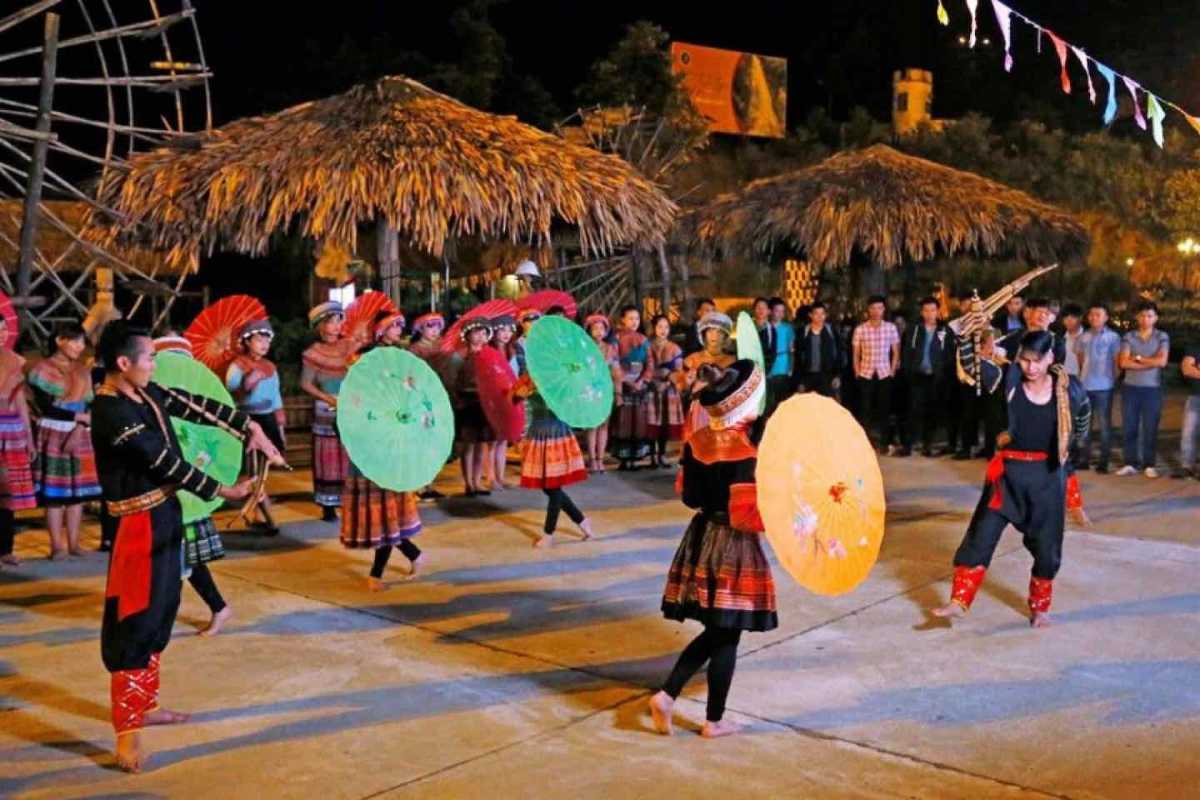
Cultural Experiences and Entertainment
At Sapa Night Market, the culture comes alive beyond the stalls through vibrant performances, festivals, and hands-on workshops that invite you to immerse yourself fully. These experiences showcase the heritage and creativity of Sapa’s ethnic communities, adding a rich layer of meaning to your visit.
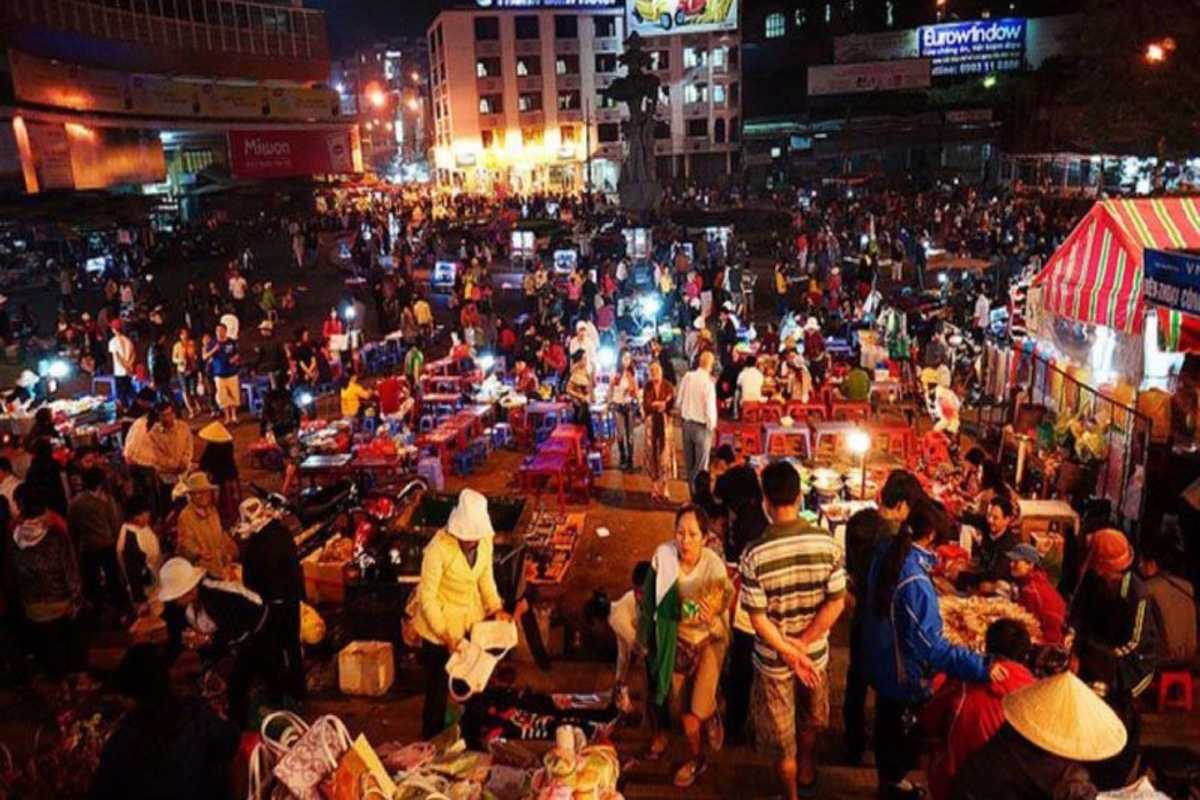
Live Performances and Traditional Music
The market often becomes a stage for colorful folk dances and melodic traditional music, offering visitors a glimpse into local artistry.
When and where to catch folk dances and music shows
Performances usually take place in the main square near Sapa Stone Church or within the heart of the market area. Typical shows include:
- Bamboo Dancing: A rhythmic and energetic dance performed by ethnic groups, featuring coordinated footwork between bamboo poles.
- Traditional Flute Music: Gentle melodies played on local flutes, evoking the serene mountain atmosphere.
- Singing Performances: Vocal showcases of folk songs that tell stories of community and nature.
Most performances are free, though visitors may be encouraged to offer a small donation as appreciation for the artists. Checking local schedules or asking at tourist information can help you catch these cultural highlights.

Cultural Festivals and Special Events
The Sapa Night Market comes alive with vibrant cultural festivals and special events throughout the year, offering visitors an authentic glimpse into the region’s rich traditions. Among the most notable is the historic Love Market, once a lively gathering where young people from local ethnic groups like the Hmong, Dao, Tay, and Giay met to celebrate courtship and social bonds. While the traditional event has evolved, its spirit still influences the market's lively atmosphere, with occasional symbolic celebrations that highlight the community’s heritage.
In addition to the Love Market, Sapa hosts several seasonal festivals, such as the New Year Festival and harvest celebrations, where colorful costumes, traditional music, and dance performances become central attractions at the market. These events significantly enrich the visitor experience, creating an energetic and culturally immersive environment. Timing your visit to coincide with these festivals allows you to witness authentic rituals, sample special foods, and enjoy unique performances that are rarely found elsewhere.
For those interested in planning their trip around these festivities, local tourism websites and visitor centers provide updated calendars and detailed information to help you make the most of your visit to the Sapa Night Market during these special times.
Highlights from the Love Market, seasonal celebrations, and ethnic holidays
The Love Market holds a special place in the history of Sapa Night Market. Traditionally, it was a gathering where young people from various ethnic groups met to socialize, court, and celebrate love. Today, while the original event no longer occurs as it once did, symbolic representations and festive echoes of the Love Market still enrich the atmosphere, reminding visitors of this romantic heritage.
Throughout the year, several major festivals and celebrations add vibrancy to the market. The Sapa New Year Festival draws crowds with traditional dances, music, and colorful attire, transforming the market into a cultural showcase. Similarly, harvest festivals celebrate the bounty of the land with food, crafts, and community rituals that affect the market’s offerings and ambiance.
Visitors planning their trip can consult local Sapa tourism calendars or websites for up-to-date event schedules to align their visit with these unique celebrations and experience the market at its liveliest.

Meet the People of Sapa Night Market
Connecting with the vibrant community at Sapa Night Market offers a deeper, more meaningful experience beyond shopping or sightseeing. To truly appreciate this lively hub, it’s important to engage with vendors, artisans, and local guides with respect and genuine interest. Simple gestures like a warm greeting or a polite question can open doors to fascinating stories and cultural insights.
When meeting locals at the market, remember that your respectful interaction supports their livelihoods directly. Many artisans and vendors rely on visitors’ curiosity and appreciation to sustain traditional crafts and daily life. Take time to listen, ask about their work or traditions, and approach each conversation with kindness and patience. This openness not only enriches your visit but also fosters a positive, reciprocal connection with the community.
If you are unsure where to start, local guides offer invaluable introductions and explanations that bridge cultural gaps. They can help you navigate social norms and provide context to the rich cultural tapestry present at the market. Supporting these guides ensures a more authentic and responsible travel experience while benefiting the local economy.
Embrace these encounters as an opportunity to build real connections that go beyond souvenirs, turning your visit into a shared celebration of heritage and humanity.
Stories from vendors, artisans, and local guides
This section shares inspiring stories from the people who make Sapa Night Market come alive every evening. Vendors often have rich personal histories and craft traditions passed down through generations. Artisans take pride in their handmade goods, like intricate textiles and silver jewelry, each piece telling a story of culture and skill.
Local guides frequently recount memorable interactions, showing visitors how to engage respectfully and meaningfully. These narratives offer insight into the daily lives of the ethnic communities such as the Hmong, Dao, Tay, and Giay. Listening to these stories creates a connection that transforms a simple market visit into an immersive cultural experience.
- Polite Greetings: Use simple phrases like “Chào anh/chị” to show respect when approaching vendors.
- Ask Permission: Always ask before taking photos to honor privacy and cultural sensitivity.
- Light Conversation: Engage with gentle questions about their crafts or traditions to build rapport.
- Support Local Livelihoods: Remember that your purchases and respectful interactions help sustain these communities.
These stories highlight the warmth and generosity of Sapa's people, inviting visitors to experience the market with empathy and openness.

Try Your Hand at Traditional Crafts
If you want to go beyond just watching, Sapa Night Market offers you the chance to try your hand at traditional crafts. Several local groups and NGOs organize informal weaving and embroidery workshops either right at the market or nearby. These sessions are designed for beginners and give you an authentic taste of Sapa’s rich artisan heritage.
In these workshops, you might learn how to weave colorful textiles using traditional backstrap looms or create simple embroidered patterns that reflect the designs of the Hmong or Dao ethnic groups. It’s a hands-on experience that not only lets you make a unique souvenir but also deepens your appreciation for the skill and patience required to keep these traditions alive.
Some local community centers and cultural organizations offer these classes regularly. If you’re interested, you can ask for information at the market’s tourist information desk or from your hotel concierge. Many guides can also connect you with trusted workshop providers to ensure you have an enriching and respectful experience.
Participating in these workshops is a wonderful way to engage with the culture of Sapa and leave with more than just memories—take home a piece of the market’s heart that you crafted yourself.
Opportunities for visitors to join weaving or embroidery workshops
Hands-on workshops at or near Sapa Night Market offer a memorable way to learn local crafts. Here’s what you can expect:
- Local NGO Classes: Small groups teaching traditional weaving or embroidery techniques in a welcoming setting.
- Market-Based Workshops: Quick, informal sessions led by skilled artisans where visitors create simple keepsakes.
- Learning Outcomes: Understand weaving patterns, stitch embroidery motifs, and gain insight into cultural symbolism.
- How to Join: Visit the tourist information booth, ask local guides, or contact community centers in Sapa for schedules and bookings.
- Practical Details: Workshops usually last 1–2 hours and are suitable for all skill levels, with materials provided.
Trying your hand at these crafts connects you to Sapa Night Market’s cultural roots and creates a unique souvenir you’ll cherish forever. Don’t miss this opportunity to learn directly from the artisans who keep these traditions vibrant.

Practicalities & Problem Solving at the Market
Visiting Sapa Night Market can be an incredible experience, but like any bustling market, it comes with its own set of challenges. From language barriers to unexpected situations, being prepared can make your visit smoother and more enjoyable. This section equips you with practical tips and real-life advice to face common hurdles confidently. Knowing a few essential phrases, having handy apps ready, and being aware of safety tips can transform your night market adventure into a hassle-free memory.
Plan ahead with these solutions to stay relaxed and focused on the vibrant culture around you. Embrace the spontaneity of the market knowing you’re ready for anything.
End your preparation by checking your essential travel tools and downloading useful language apps to keep communication seamless as you explore Sapa Night Market.

Navigating Language Barriers: Essential Phrases & Tips
Communication can be a challenge at Sapa Night Market, where many vendors speak limited English. To bridge this gap, learning a handful of simple Vietnamese phrases can go a long way. Basic greetings like “Chào” (hello) and polite expressions such as “Cảm ơn” (thank you) show respect and open doors to friendlier interactions. Knowing how to ask “Bao nhiêu tiền?” (how much is it?) and say “Quá đắt” (too expensive) helps during negotiations.
Offline translation apps like Google Translate or Microsoft Translator can assist when conversations get tricky. These tools work without internet connection and support text or voice translations. Non-verbal cues, such as pointing to items or using your calculator, often communicate your intentions clearly. Gestures combined with a smile can create a positive atmosphere even without perfect language skills.
Take a moment to practice these phrases before your visit to Sapa Night Market. The effort is usually appreciated and can lead to warmer, more genuine exchanges.
Simple Vietnamese phrases, translation apps, and non-verbal communication
When visiting Sapa Night Market, these language tips will help you communicate effectively:
- Basic Greetings: “Chào” (hello), “Cảm ơn” (thank you), “Tạm biệt” (goodbye)
- Asking Prices: “Bao nhiêu tiền?” (how much is it?), “Quá đắt” (too expensive)
- Affirmations: “Vâng” (yes), “Không” (no)
- Translation Apps: Download offline versions of Google Translate or Microsoft Translator before arriving
- Non-Verbal Tools: Use gestures, point at items, and show your calculator when discussing prices
Combining these strategies ensures smoother conversations and more respectful exchanges at the market.
Keep these phrases handy, and don’t hesitate to smile—it’s a universal language that bridges gaps.
Maria's Language Hack: A Few Words Go a Long Way
Stepping into the lively chaos of the Sapa Night Market, a common worry that flitted through my mind was the language barrier. English isn't universally spoken, especially among the local vendors. However, I quickly learned that a little effort goes an incredibly long way. My experience at the Sapa Night Market was profoundly transformed by arming myself with just two crucial Vietnamese phrases: "Cảm ơn" (thank you) and "Bao nhiêu tiền?" (how much money?). This wasn't just about facilitating transactions; it was about building bridges and truly connecting with the people, demonstrating invaluable language tips Sapa Night Market visitors should absolutely embrace.
I remember one particular evening, Browse a stall overflowing with beautifully embroidered bags. I picked one up, admiring the intricate patterns. When the vendor, a kind-faced woman with a shy smile, quoted a price in Vietnamese, I took a deep breath and, with a hopeful smile, attempted, "Bao nhiêu tiền?" Her face immediately lit up. Her smile broadened, and she repeated the price, but this time with a softer, more encouraging tone. It wasn't just the words, but the visible effort that seemed to warm the interaction. She then gestured, trying to explain the different sizes, and even though I didn't understand every word, the positive vendor reactions Sapa is known for made me feel genuinely welcome and appreciated. The air around us shifted from a transactional exchange to a more personal connection, all because of a few humble words.
Later that same evening, I found myself admiring some unique handcrafted silver jewelry. I had a more complex question about the origin of the silver. Hesitantly, I pulled out my phone and used a translation app. When I showed the translated query to the vendor, his eyes widened slightly in surprise, then crinkled with amusement and pleasure. He patiently read the translation, then used the app himself to type out a detailed response. This was a moment of true digital support bridging communication gaps. It showed me that even for complex queries, the willingness to try and the use of accessible tools like translation apps Sapa travelers can easily use, can lead to incredibly enriching dialogues. Every "Cảm ơn" after a purchase, every attempt at "Bao nhiêu tiền?", was met with smiles and a genuine warmth that made the entire market experience feel more authentic and less like I was just another tourist passing through.
Here are some insights and practical takeaways from my language hack:
- Learn the Basics: Even just "Cảm ơn" (thank you) and "Bao nhiêu tiền?" (how much money?) will open doors and show respect. Practice saying them confidently.
- Embrace Body Language: A smile, a nod, and pointing can go a long way in conjunction with a few spoken words.
- Don't Fear Mistakes: Locals appreciate the effort, even if your pronunciation isn't perfect. Laughter and gestures can often clarify misunderstandings.
- Utilize Translation Apps: For more complex questions or conversations, a good offline translation app (like Google Translate) is an invaluable tool. Pre-download languages if possible.
- The Power of Connection: These small linguistic efforts create a more personal and memorable interaction, fostering a sense of warmth and genuine connection with the local community.
My simple language hack at the Sapa Night Market taught me that true travel immersion isn't just about what you see, but about who you connect with. The smiles and positive interactions I received were far more valuable than any souvenir.
Recommendation: For anyone planning a visit to the Sapa Night Market, I highly encourage you to learn a few basic Vietnamese phrases. It's a small effort with an outsized impact, fostering warmth, improving interactions, and transforming your experience from a simple visit into a truly memorable cultural exchange. Don't be afraid to try – your efforts will be genuinely appreciated!

Handling Unexpected Situations: Minor Scrapes to Lost Items
When visiting Sapa Night Market, unexpected events can happen, from minor scrapes to losing personal items. Being prepared and knowing what to do can save time and stress. Carry a small first-aid kit with bandages, antiseptic wipes, and pain relief to handle minor injuries. If you get separated from your group or lose something, head to a pre-arranged meeting point or ask nearby vendors for help. Inform your hotel or contact local authorities promptly for assistance.
Having a list of emergency numbers on hand is crucial. In Sapa, dial 113 for police and 115 for medical emergencies. Knowing these contacts ahead of time ensures you’re ready if anything goes wrong.
Planning for these possibilities will keep you calm and confident, letting you enjoy the vibrant market atmosphere without worry.
Basic first aid, what to do if you get lost, and contacting authorities
Being prepared for minor issues at Sapa Night Market means knowing these key steps:
- First-Aid Kit: Carry essentials like bandages, antiseptic, and painkillers for scrapes or small injuries
- Lost Item Protocol: Return to a designated meeting spot, alert vendors, and retrace your steps carefully
- Separation from Group: Agree on a meetup point before entering the market to reunite easily
- Contact Hotel: Inform your accommodation if you lose something or need help
- Emergency Numbers in Sapa: Police – 113, Medical Emergency – 115
Following these steps helps you quickly resolve problems and stay safe while exploring the market.
Mark's Smooth Recovery: What to Do When Things Go Wrong
Even in the most magical of places like the Sapa Night Market, little mishaps can happen. It’s a bustling, vibrant place, and amidst the sensory overload, it's easy to get momentarily disoriented. My own small moment of panic, quickly diffused, taught me invaluable lessons about resilience and the incredible kindness of the local people. It demonstrated that any concerns about problem-solving Sapa Night Market challenges might present are easily overcome with a little preparedness and trust.
It was fairly early in my exploration of the Sapa Night Market. The aroma of grilling meats and simmering soups was pulling me in one direction, while the dazzling array of textiles beckoned from another. I was weaving through a particularly dense crowd near a food stall, completely absorbed by the spectacle, when I stumbled. My foot caught on something unseen, and with an ungraceful lurch, my small daypack flew open, sending my water bottle and a few small souvenirs scattering onto the damp ground. For a split second, I felt a familiar wave of travel anxiety wash over me – that momentary feeling of being lost in the crowd, exposed.
Before I could even fully register what had happened, or begin to bend down, two hands were already there. A young Vietnamese woman, no older than her early twenties, had instantly crouched down beside me. With a gentle smile and without a word, she began collecting my scattered items. Her quick, decisive action was mirrored by an older man, a vendor from a nearby stall, who simply pointed to my open bag with a reassuring gesture, as if to say, "Put it all in here." There was no judgment, no fuss, just immediate, unassuming local assistance Sapa is so rich with. It was an instinctive act of kindness that cut through my momentary embarrassment and replaced it with profound gratitude.
I managed a heartfelt "Cảm ơn!" as they handed my things back, and the young woman simply smiled and gave a small nod before melting back into the crowd. The entire incident lasted less than a minute, but its impact stayed with me. It was a powerful reminder that even when things go wrong, there's an inherent human kindness that transcends language and culture. It also reinforced the importance of being mindful of your surroundings, but more importantly, to trust in the goodwill of others. While I hadn't needed a pre-planned meeting point in this specific instance, the idea of having one had crossed my mind earlier – a practical tip that could be invaluable if you genuinely get separated from travel companions or feel lost.
Here are some insights and practical takeaways from my mishap and smooth recovery:
- Mind Your Surroundings: The Sapa Night Market is lively! Pay attention to where you're walking and the flow of the crowd to minimize minor tumbles.
- Secure Your Belongings: Keep bags zipped and valuables close. A crossbody bag or a secure daypack can prevent spills or accidental losses.
- Trust Local Kindness: Don't underestimate the inherent helpfulness of the locals. In a minor scrape, people are often quick to offer assistance.
- Pre-Plan Meeting Points: If you're with a group, establish a clear, easily identifiable meeting point within or just outside the market, especially useful if you experience a feeling of being lost in the crowd or separated.
- Don't Panic: Minor incidents are often quickly resolved. Take a breath, assess the situation, and be open to accepting help.
My small misstep at the Sapa Night Market turned into a powerful lesson in trusting humanity. It reassured me that even away from familiar comforts, there's always a helping hand, confirming that help at Sapa Night Market is readily available if you ever need it.
Recommendation: While the Sapa Night Market is an incredible experience, it's wise to be prepared for minor bumps. Rest assured that should a small mishap occur, the warmth and helpfulness of the local Sapa community are truly remarkable. Keep your belongings secure, stay aware of your surroundings, and don't hesitate to trust in the kindness of strangers – it's often the most beautiful part of the journey.

Top Tips for Visiting Sapa Night Market
Visiting Sapa Night Market is a vibrant experience, but to make the most of it, a little preparation goes a long way. Knowing how to respect local customs, stay safe in busy crowds, and manage your money effectively ensures your visit is both enjoyable and worry-free. From dressing modestly to keeping an eye on your belongings, these insider tips will help you navigate the market confidently while showing respect for the community. Planning ahead also lets you soak up the atmosphere fully without unnecessary stress.
Make sure to pace yourself and stay aware of your surroundings, especially during peak hours near Sapa Stone Church and popular stalls. Keep cash handy in Vietnamese Dong, as many vendors prefer it, and brush up on your bargaining skills to get fair prices without offending the sellers. With these practical tips, your time at Sapa Night Market will be safe, fun, and culturally rewarding.
Take these top tips with you to enhance your visit and enjoy the full magic of Sapa Night Market.

Staying Safe and Respectful
When you visit Sapa Night Market, safety and respect are key to a positive experience. Dressing modestly shows consideration for local customs, especially when photographing ethnic minorities such as the Hmong or Dao. Always ask politely before taking photos, as this fosters goodwill and mutual respect.
Pickpocketing can be an issue in crowded places like the market, so secure your belongings carefully. Keep your bags zipped and close to your body, and stay alert, especially in busy areas. Avoid giving money directly to begging children; instead, consider supporting local NGOs that help the community in a sustainable way.
Being aware of your surroundings, respecting cultural norms, and practicing good safety habits will ensure your visit is both enjoyable and respectful.
Etiquette, pickpocket prevention, and photo tips
Visiting the market respectfully means following some simple but important etiquette and safety tips:
- Dress Modestly: Wearing respectful clothing helps honor local traditions and avoids unwanted attention.
- Ask Before Photos: Always request permission before photographing people, especially ethnic minorities.
- Secure Your Belongings: Keep bags zipped and valuables close to prevent pickpocketing.
- Avoid Direct Giving: Do not hand money to begging children; support local NGOs instead.
- Stay Alert: Be mindful of your surroundings, particularly in crowded sections of the market.
Following these guidelines not only keeps you safe but also shows respect for the vibrant culture at Sapa Night Market.

How to Make the Most of Your Sapa Night Market Visit
To truly enjoy your time at Sapa Night Market, some smart planning goes a long way. Arriving early lets you beat the busiest crowds, giving you more space to browse and interact with vendors. If you prefer the full lively ambiance, visiting later in the evening brings the market’s vibrant energy to life under the glow of lights.
Setting a clear budget before you go helps manage spending on food and souvenirs without surprises. Focus on “must-see” spots—like the colorful textile stalls and popular street food vendors—to ensure you catch the best the market offers. Don’t miss nearby gems such as Sapa Stone Church, which is beautifully illuminated in the evening and perfect for a quick visit before or after your market stroll.
With these insider tips, you’ll navigate the market efficiently, enjoy all highlights, and stretch your budget wisely.
Planning your visit, must-see spots, and time-saving hacks
Making the most of Sapa Night Market means preparing smartly:
- Arrive Early or Late: Avoid peak crowds by coming early for calm or late for full energy.
- Set a Budget: Decide on spending limits for food and souvenirs to stay on track.
- Visit Must-See Stalls: Prioritize stalls known for textiles, local crafts, and street food favorites.
- Explore Nearby Attractions: Include stops like Sapa Stone Church to enrich your evening.
Following these simple strategies ensures your visit is enjoyable, efficient, and unforgettable.

Money Matters and Bargaining Tips
When visiting Sapa Night Market, cash is the preferred payment method, and the Vietnamese Dong rules the day. Many vendors do not accept cards, so having enough cash on hand is essential for a smooth shopping experience.
Typical prices are quite affordable: a grilled skewer might cost around 15,000 to 30,000 Dong, while small souvenirs like embroidered items or silver jewelry range from 50,000 to 200,000 Dong depending on quality. Knowing these rough price ranges helps you budget wisely and avoid overpaying.
Bargaining is part of the culture at Sapa Night Market, but it’s important to do so respectfully. Aim to negotiate for about 10 to 30 percent off the initial asking price. Approach negotiations with a friendly smile and good humor to build rapport with vendors. Remember, some items like food usually have fixed prices, so avoid haggling there to keep things fair.
With these money tips, you can confidently manage your spending while supporting local sellers fairly.
Using cash, typical prices, and getting the best value
Handling money at Sapa Night Market is straightforward when you keep these tips in mind:
- Use Cash (Vietnamese Dong): Cards are rarely accepted, so carry enough cash for food, shopping, and small purchases.
- Know Typical Prices: Expect to pay 15,000–30,000 Dong for grilled skewers and 50,000–200,000 Dong for souvenirs.
- Bargain Politely: Aim for a 10–30% discount on non-food items; approach vendors with kindness and respect.
- Avoid Bargaining on Food: Most food prices are fixed, so focus your negotiation on handicrafts and souvenirs.
Following these guidelines helps you get the best value and enjoy a smooth, respectful shopping experience.

What’s Nearby? Explore More Around Sapa Night Market
Nestled in the heart of Sapa, the Sapa Night Market offers more than just vibrant stalls and local flavors. Just steps away, you can discover iconic landmarks, enjoy tranquil evening walks, and plan exciting excursions to make the most of your visit. Whether you want to admire historic architecture, relax at nearby cafes, or set out on scenic adventures, the area surrounding the market is rich with opportunities to deepen your Sapa experience.
Extend your journey by visiting well-known sites like Sapa Stone Church and Central Square, which are beautifully lit at night and perfect for photos. For those who want to unwind, nearby spots like Sapa Lake and cozy local hangouts await. Adventure seekers can prepare for memorable day trips to Fansipan Cable Car, Cat Cat Village, Muong Hoa Valley, or climb Ham Rong Mountain.
By exploring these nearby gems, you can fully immerse yourself in the culture, history, and natural beauty that make Sapa a truly special destination.
Take time to wander beyond the market and create a richer, more varied travel experience.

Sapa Stone Church and Central Square
The Sapa Stone Church and Central Square are two of the most iconic landmarks located just a short walk from the Sapa Night Market. The church, built in the early 1900s during the French colonial era, features impressive stone architecture and stained glass windows that reflect the town’s rich history and cultural heritage. It remains a popular gathering place for both locals and tourists.
Adjacent to the church, Central Square serves as the vibrant town center where visitors can relax, watch local life unfold, and often catch live performances or festivals. The square is especially charming at night when illuminated, creating a warm and inviting atmosphere.
Many visitors choose to explore these landmarks either before or after their visit to the market, making it easy to combine cultural sightseeing with shopping and dining experiences.
Including these stops in your itinerary will enrich your understanding of Sapa and offer excellent photo opportunities.
A look at iconic landmarks just steps away
The Sapa Stone Church stands as a striking example of French colonial architecture, built in the early 20th century with distinctive stone walls and stained-glass windows. It serves as a historic symbol of Sapa and a beloved meeting point for locals and visitors alike.
Located just beside the church, Central Square is the bustling heart of town. This open plaza often hosts community events and provides an ideal spot to rest or people-watch.
Both sites are especially enchanting in the evening when illuminated by soft lighting, creating perfect photo opportunities. Many visitors enjoy visiting the church and square before or after exploring the vibrant market.
Discover these landmarks to enrich your evening stroll around Sapa Night Market and soak in the town’s heritage.

Evening Walks and Local Hangouts
After exploring Sapa Night Market, many visitors look for ways to relax and extend their evening with some quiet or social activities nearby. This section guides you through the best places to unwind, enjoy local flavors, or take in peaceful surroundings after the market closes.
You can find several charming cafes near the market where you can savor authentic Vietnamese coffee or herbal teas. Places like The Hill Station and Café in the Clouds offer cozy atmospheres and great views. These spots are perfect for warming up after a cool mountain evening or simply enjoying a calm moment.
For nightlife enthusiasts, popular bars such as Love Market Bar and The Haven provide live music and a friendly vibe, making them favorite hangouts for travelers and locals alike. These venues offer a mix of regional craft beers and cocktails, plus the chance to mingle and experience Sapa’s vibrant night scene.
If you prefer a more tranquil end to your evening, a stroll around Sapa Lake is highly recommended. The area is safe, well-lit, and beautifully serene at night, offering stunning reflections of the mountains and town lights. Walking here lets you digest the day’s sights and sounds while soaking in the peaceful ambiance.
Nearby restaurants like Good Morning View and Little Vietnam serve delicious local dishes in relaxed, intimate settings. They’re great choices for a late meal or snack after your market visit, letting you enjoy authentic flavors away from the hustle.
These evening spots provide a perfect balance of excitement and relaxation to complement your visit to Sapa Night Market.
Favorite places for nightlife and quiet escapes after the market
This section highlights some of the top venues and peaceful spots that visitors often choose after exploring Sapa Night Market.
- Cozy Cafes: The Hill Station and Café in the Clouds — offering excellent coffee, light snacks, and panoramic views of Sapa’s mountains.
- Popular Bars: Love Market Bar and The Haven — known for live music, local craft beers, and a welcoming atmosphere.
- Peaceful Walks: Sapa Lake — a safe, illuminated place for a calm stroll with scenic night views.
- Local Restaurants: Good Morning View and Little Vietnam — serving traditional Vietnamese cuisine in cozy environments ideal for late dining.
These recommendations help visitors find the perfect way to unwind, whether you prefer a lively night out or a quiet, reflective walk. Incorporate these local favorites into your itinerary to enrich your overall Sapa Night Market experience.

Recommended Excursions and Short Trips
When visiting Sapa Night Market, many travelers seek to extend their experience with exciting excursions nearby. Sapa offers a variety of memorable short trips and activities that showcase its breathtaking landscapes and rich culture.
Popular adventures include the Fansipan cable car, which takes you to the highest peak in Indochina with stunning panoramic views. Exploring Cat Cat Village offers an immersive look into traditional ethnic minority life, with charming homes and artisan crafts. Trekking through the Muong Hoa Valley provides scenic trails surrounded by terraced rice fields and mountain vistas. Ham Rong Mountain is another favorite, known for its beautiful gardens and lookout points right near Sapa town.
These excursions can be arranged easily through local tour operators based in Sapa, many of whom offer half-day or full-day tours tailored to your interests and fitness level. It’s advisable to book in advance during peak seasons to secure your spot.
For detailed guides and booking options, consider visiting trusted travel websites or contacting Asia Travel Links, who can assist with itinerary planning and tour arrangements to enhance your Sapa Night Market trip.
Trekking, cable car rides, and scenic viewpoints close to Sapa
This section outlines key activities and excursions you can enjoy near Sapa Night Market.
- Fansipan Cable Car: Ride to the summit of Fansipan Mountain, the highest peak in Vietnam, for panoramic views and photo opportunities.
- Cat Cat Village: Visit this traditional Hmong village to experience local culture, crafts, and natural scenery.
- Muong Hoa Valley Trekking: Explore scenic hiking trails amidst terraced rice fields and traditional villages.
- Ham Rong Mountain: Discover beautiful botanical gardens and spectacular viewpoints just a short distance from town.
These excursions add adventure and cultural depth to your visit, complementing the lively atmosphere of Sapa Night Market. Booking through reputable local operators or trusted travel partners ensures a smooth, enriching experience.

Sustainable Tourism and Community Connections
Traveling to Sapa Night Market offers more than just vibrant sights and sounds; it provides an opportunity to support a community rich in tradition and culture. Responsible tourism means actively contributing to the preservation of local heritage, empowering artisans, and protecting the environment. By choosing to engage ethically and mindfully, your visit can uplift families and sustain the unique cultural fabric of Sapa for future generations.
When you shop or participate in activities at Sapa Night Market, opting for fair-trade goods and supporting local initiatives ensures your travel has a positive ripple effect. Embrace eco-friendly habits, respect cultural norms, and learn about ongoing preservation projects. Together, visitors and locals can build a sustainable future where tourism benefits all.
Every mindful choice helps maintain the beauty and spirit of Sapa Night Market. Consider integrating responsible travel practices into your itinerary for a richer, more meaningful experience.

Supporting Local Communities and Fair Trade
Visiting Sapa Night Market means entering a space where the livelihoods of many ethnic minority families depend on tourism. Your spending power can directly impact the well-being of these communities. By buying directly from artisans, you ensure that profits reach the creators rather than middlemen or exploitative resellers.
Many vendors at the market participate in fair-trade initiatives that promote equitable pay and ethical production methods. Supporting these efforts helps preserve traditional crafts and empowers artisans to sustain their cultural practices.
Respectful tourism also means understanding the social dynamics at play—appreciating the traditions behind each handcrafted item and acknowledging the hard work of the local people. This conscious approach fosters mutual respect and long-term community benefits.
How Your Visit Helps Preserve Sapa’s Traditions and Livelihoods
Your visit to Sapa Night Market directly supports local ethnic minorities by injecting income into their communities. Purchasing handcrafted goods like textiles, jewelry, and traditional crafts sustains their heritage and provides families with vital financial resources.
- Economic Impact: Tourism revenue is crucial for many ethnic groups, including the Hmong, Dao, and Tay, helping fund education, healthcare, and community projects.
- Direct Purchase Benefits: Buying straight from artisans avoids exploitative middlemen, ensuring fair compensation and encouraging authentic craft production.
- Fair-Trade Initiatives: Some market stalls participate in fair-trade programs promoting ethical labor standards and cultural preservation.
- Empowerment Through Respectful Tourism: Mindful buying encourages artisans to continue their crafts, preserving traditions for future generations while uplifting local livelihoods.
By choosing to support local communities ethically, you become part of a positive cycle that enriches both traveler experience and community sustainability. Embrace your role in preserving the cultural heartbeat of Sapa Night Market.

Eco-Friendly Travel Tips for Night Market Visitors
Enjoying Sapa Night Market responsibly means taking small but meaningful steps to protect the environment and respect local culture. Minimizing your ecological footprint helps preserve this vibrant destination for future travelers and the local community.
Simple actions like bringing reusable bags and water bottles reduce plastic waste, a growing concern in busy markets. Always dispose of trash properly and avoid littering to keep the market clean and inviting. Showing respect to vendors and visitors alike by honoring cultural norms strengthens community bonds.
Choosing tour operators and services committed to sustainability amplifies your positive impact. By traveling thoughtfully at Sapa Night Market, you contribute to a healthier environment and more authentic cultural exchange.
Reducing Waste, Respecting Culture, and Leaving a Positive Impact
Visiting Sapa Night Market with sustainability in mind helps safeguard both the natural environment and the cultural heritage that make the market special.
- Use Reusable Bags and Bottles: Bring your own to reduce single-use plastics and help lower waste production.
- Avoid Littering: Dispose of any trash in designated bins and encourage others to do the same.
- Respect Local Customs: Engage with vendors and locals thoughtfully, honoring traditions and community values.
- Choose Responsible Tour Operators: Support businesses that prioritize environmental care and community well-being.
Following these eco-friendly tips ensures your visit leaves a positive footprint on Sapa Night Market and contributes to its long-term preservation.

Initiatives Making a Difference in Sapa
Several local organizations and NGOs play a vital role in preserving the cultural heritage and natural environment around Sapa Night Market. These groups focus on empowering ethnic communities, supporting education, and promoting sustainable tourism practices that benefit both residents and visitors.
One notable example is the Sapa Community Development Project, which works to improve education and health services for local ethnic minorities. Another is the Green Sapa Initiative, dedicated to environmental conservation through reforestation and waste management programs. These projects welcome support from visitors interested in contributing to Sapa’s sustainable future.
Visitors seeking to deepen their positive impact can explore partnerships and donation options directly through these organizations’ websites or local visitor centers.
Local Projects and NGOs Promoting Sustainability
The following groups exemplify the commitment to sustainability and community empowerment in Sapa:
- Sapa Community Development Project: Focuses on improving education, health, and economic opportunities for ethnic minorities.
- Green Sapa Initiative: Leads environmental protection efforts such as tree planting and waste reduction campaigns.
- Local Artisan Cooperatives: Promote fair trade and support traditional crafts, ensuring artisans receive fair income.
- Education Outreach Programs: Provide scholarships and learning materials to children from remote villages.
By engaging with or donating to these organizations, travelers contribute beyond their visit, helping preserve the spirit and environment of Sapa Night Market for generations to come.

Why You’ll Love Sapa Night Market!
The Sapa Night Market offers an unforgettable blend of vibrant culture, delicious local flavors, and unique shopping experiences. Visitors often praise its lively atmosphere, the rich diversity of ethnic crafts, and the warmth of the community. From the first step into the bustling market, you’ll sense a special energy that makes every visit memorable. Whether you’re savoring grilled treats or discovering handmade textiles, the market leaves a lasting impression that many travelers cherish for years.
Take inspiration from genuine traveler experiences and get ready to create your own cherished memories at Sapa Night Market. Join the community of explorers who have fallen in love with this northern Vietnam gem.
Call to action: Plan your visit to Sapa Night Market today and experience its unique charm firsthand.

What Travelers Say About Their Visits
Visitors consistently highlight the Sapa Night Market for its vibrant atmosphere, authentic local food, and the opportunity to buy one-of-a-kind souvenirs. Reviews from popular travel sites describe the market as “a feast for the senses” where the aromas of street food mingle with traditional music. Many note the warmth and friendliness of the vendors and the colorful diversity of the ethnic minorities present.
Quotes from travelers include:
- “I spent hours just soaking in the atmosphere — it’s unlike anywhere else.”
- “The grilled skewers and handmade crafts were unforgettable.”
- “A perfect mix of culture, food, and shopping in one place.”
These positive sentiments reflect a deep appreciation for the market’s authenticity and cultural richness. They provide assurance that your visit will be both enjoyable and meaningful.
Conclude with a prompt to share your own stories: Have you visited Sapa Night Market? Share your favorite memories or tips with fellow travelers.
Favorite Memories, Reviews, and Can’t-Miss Experiences
This section highlights some of the most beloved aspects of the Sapa Night Market according to visitors:
- Vibrant Atmosphere: The lively mix of music, chatter, and colorful textiles creates a dynamic environment.
- Delicious Food: From traditional grilled skewers to local herbal teas, the flavors are a major draw.
- Unique Souvenirs: Handcrafted textiles, silver jewelry, and embroidered goods offer authentic keepsakes.
- Cultural Immersion: The presence of diverse ethnic groups like the Hmong and Red Dao enriches the experience.
- Friendly Locals: Warm, welcoming vendors often share stories behind their crafts.
These favorite experiences make the market not just a place to shop but a cultural journey. They showcase why so many travelers consider Sapa Night Market a must-visit destination in northern Vietnam.
Encourage readers to dive deeper into these experiences by planning their own visit, knowing they’ll find authenticity and warmth at every corner.

Insider Tips from Locals and Return Visitors
To unlock a richer experience at Sapa Night Market, tap into the wisdom of locals and seasoned travelers. Look beyond the main thoroughfares and explore the quieter back alleys where hidden gems await. Don’t hesitate to try smaller, less crowded stalls; these often offer the most authentic food and handmade goods. If possible, time your visit to coincide with unique cultural events or special market nights when traditional performances and festive atmospheres elevate the experience.
These insider tips come from firsthand accounts and trusted forums, helping you discover layers of Sapa Night Market that many miss. Armed with this knowledge, you’ll enjoy a deeper, more rewarding adventure filled with authentic sights, sounds, and tastes.
Make sure to explore these less obvious spots to maximize your visit to Sapa Night Market.
Uncommon Advice for a Richer, More Authentic Experience
To fully immerse yourself in the vibrant life of Sapa Night Market, here are some lesser-known tips that can make your visit truly special. These suggestions, sourced from locals and frequent visitors, help you avoid crowds, find authentic experiences, and connect more deeply with the market’s culture.
- Explore Back Alleys: Hidden stalls and crafts away from the crowd offer unique finds.
- Try Small Stalls: Less busy vendors often serve freshly prepared, authentic dishes.
- Visit on Special Nights: Cultural events and festivals bring the market to life with performances and local traditions.
- Ask Locals for Recommendations: Engage with residents to uncover secret spots and best buys.
- Bring Cash in Small Denominations: Helps with smooth bargaining and transactions at smaller stalls.
These practical tips open doors to an authentic connection with the market, beyond the typical tourist trail. Use them to navigate Sapa Night Market like a local and discover memorable moments.

Let’s Hear From You!
Have you experienced the magic of Sapa Night Market? We invite you to share your favorite memories, tips, or questions below. Your stories can help other travelers prepare for their adventure and enrich this vibrant community of explorers.
Your insights and experiences matter—join the conversation and connect with fellow visitors passionate about Sapa Night Market.
We look forward to hearing from you and growing this supportive travel community together.
Nhật Hoàng
Faqs
The Sapa Night Market is generally open daily from 6:00 PM to 10:00 PM. These evening hours offer visitors a vibrant atmosphere filled with food stalls, crafts, and local performances. The market’s schedule may slightly vary during special holidays or festival periods.
- The market typically opens in the early evening, allowing time for sunset views nearby.
- Closing times are consistent, but stalls may start packing up closer to 10:00 PM.
- Seasonal weather, especially in the rainy months, can influence vendor attendance and operating hours.
Plan your visit to arrive early for the full experience and lively market buzz after dark.
Visiting Sapa Night Market does not require an entry fee. The market is open to all travelers free of charge, making it an accessible and budget-friendly activity for everyone.
- You can wander through the stalls, sample street food, and shop without any admission cost.
- Costs arise only if you choose to purchase food, drinks, or souvenirs.
- Some special events or performances within the market may request small donations, but these are voluntary.
Enjoy exploring the market freely while supporting local vendors through your purchases.
To reach Sapa Night Market from Lao Cai or Hanoi, travelers commonly use a combination of train, bus, or private transfer services. The journey involves arriving in Sapa town and then walking or taking a short taxi ride to the market.
- From Hanoi, sleeper trains to Lao Cai run overnight, followed by a 1-hour bus or taxi to Sapa.
- Direct buses like the Sapa Express offer daily trips from Hanoi to Sapa town.
- From Lao Cai, local buses and taxis provide convenient access to Sapa and the night market.
- Private transfers are available for a more comfortable and flexible option.
Coordinate your arrival time to coincide with the market’s evening hours for a seamless experience.
Sapa Night Market offers a rich variety of local and ethnic dishes, ideal for adventurous food lovers. Signature foods include grilled pork and chicken skewers, traditional horse meat hotpot known as thắng cố, and bamboo rice (cơm lam). Sweet treats like roasted chestnuts and herbal teas complete the culinary journey.
- Grilled skewers feature a mix of meats and local vegetables, smoky and flavorful.
- Thắng cố is a spicy, aromatic broth made from horse meat, favored by the Hmong community.
- Cơm lam is sticky rice cooked inside bamboo tubes, giving it a unique aroma.
- Don’t miss seasonal specialties like wild mushrooms and fresh herbal infusions.
Explore stalls that clearly display hygiene practices to enjoy these delicacies safely.


